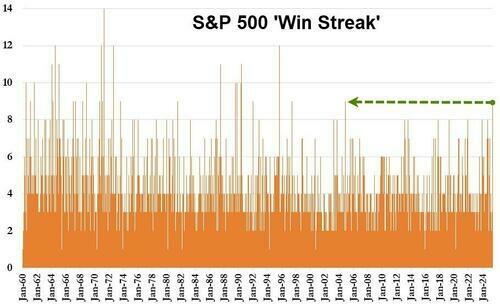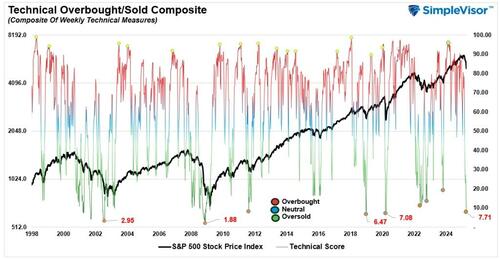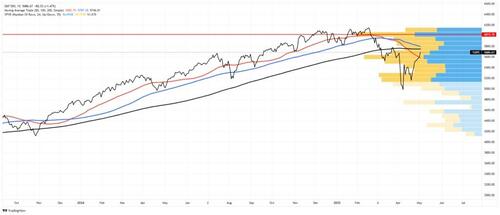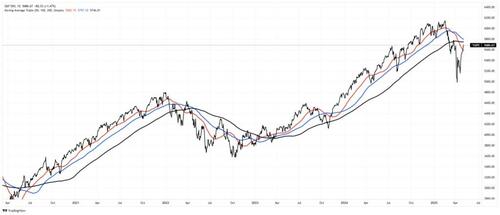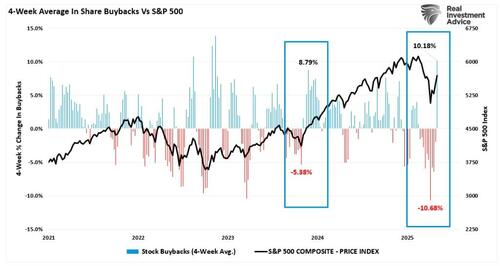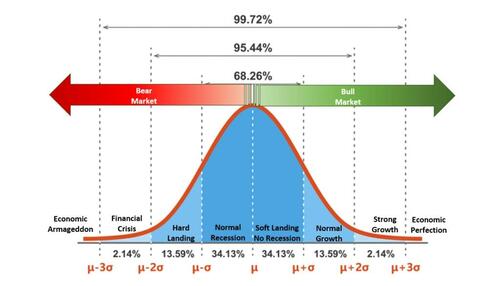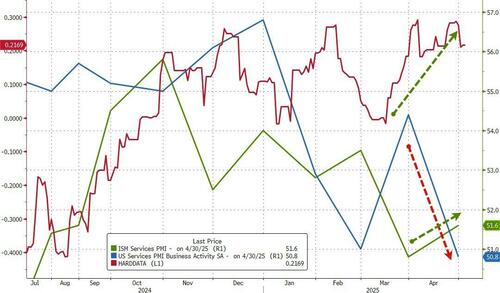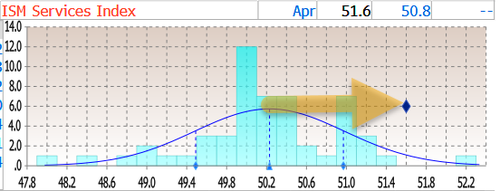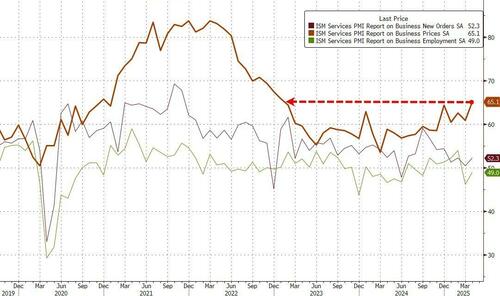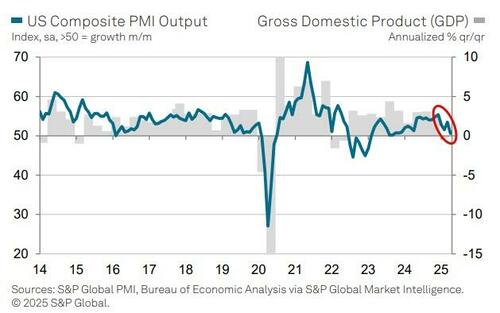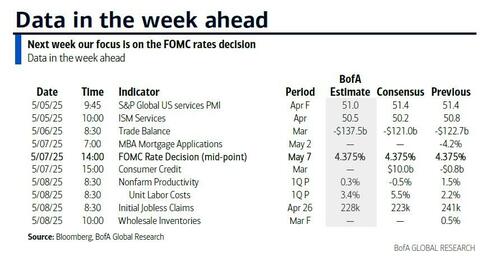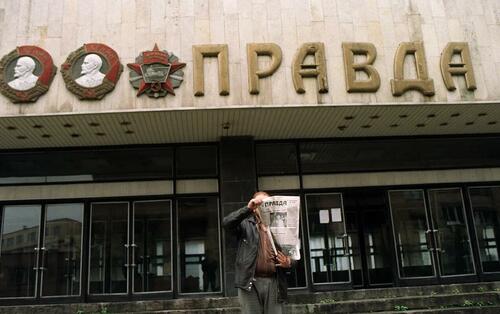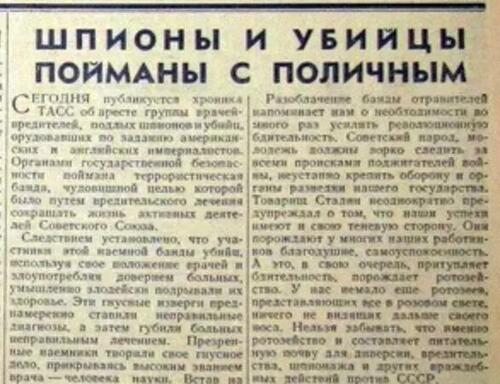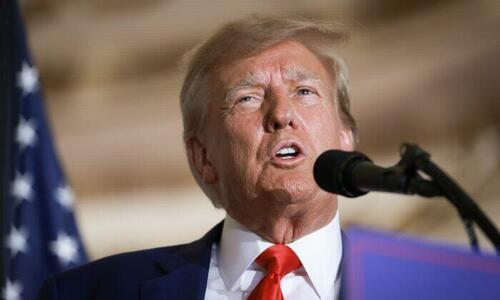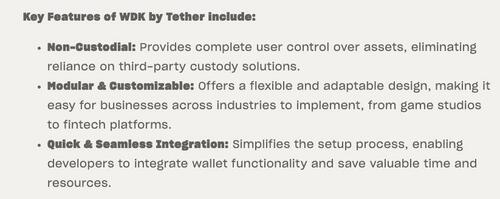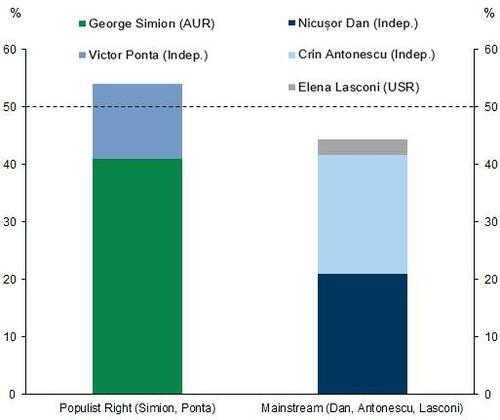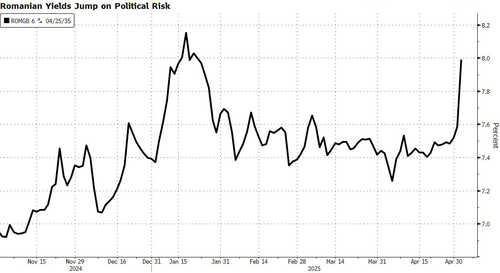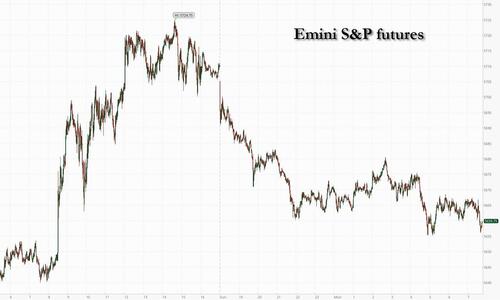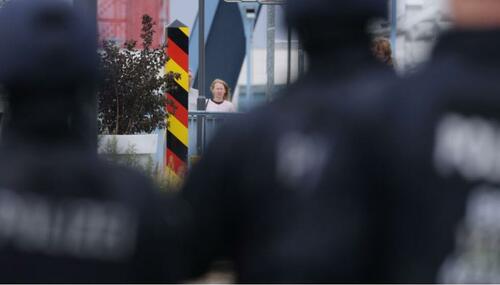The Eucharist is "the source and summit of the Christian life."
Distinction Matter - Subscribed Feeds
-
Site: Saint Louis Catholic
-
Site: non veni pacem
Happy Feast of Pope St. Pius V. His Collect is timely.
“It’s almost as if this prayer were pre-ordained by the Divine Providence for us, now, on May 5th, ARSH 2025, as we beg God for a True Pope who will restore the Church and crush her enemies.”
COLLECT: O, God, Who graciously chose blessed Pius as Supreme Pontiff, to crush the enemies of Your Church and to restore divine worship, grant that we may be guarded by his help and remain so steadfast in Your service that, having overcome the snares of all enemies, we may enjoy a lasting peace.
Now, consider this:

Cardinal Robert Prevost by Marco Iacobucci Epp / Shutterstock
Legacy and Catholic media promote one cardinal at the same time: Coincidence or campaign?
VATICAN CITY // In the lead-up to the May 2025 papal conclave, a notable pattern has emerged across legacy and Catholic media outlets: a surge of favorable coverage framing U.S.-born Cardinal Robert Francis Prevost as a leading papal contender.
In the span of 36 hours, The New York Times, the National Catholic Reporter, England’s Catholic Herald, Crux, and The Pillar, all run highly positive profiles praising the alleged many virtues of American Cardinal Robert Prevost, former prefect of the Dicastery for Bishops, presenting him as a frontrunner papabile.
This trend, visible in outlets spanning ideological spectrums, draws questions regarding its timing and selective emphasis amid unresolved questions about the cardinal’s handling of clerical misconduct cases.
The Catholic Herald, The Pillar, and Crux highlight Prevost’s administrative experience, including his role as prefect of the Dicastery for Bishops, where he advised Pope Francis on global bishop appointments. His decades of missionary work in Peru and reputation as a “moderate, balanced figure” are repeatedly cited, with The Pillar noting his “heart of a missionary” and “years of ministerial experience.” The New York Times and The National Catholic Reporter underscore his multilingual skills and perceived diplomatic tact, framing him as a bridge between ideological divides.
Another commonality among the articles is that while acknowledging abuse-related complaints, the pieces often contextualize them defensively.
For example, a significant Chicago case — involving an Agustinian priest placed near a school in 1999 when Cardinal Prevost was his superior — is described as occurring “before the US bishops adopted new standards in 2002,” with Cardinal Prevost’s approval framed as a “formality.”
Allegations in Peru, where three women accused priests of abuse under his oversight, are countered with claims that Cardinal Prevost “opened an initial canonical investigation” and cooperated with civil authorities. The Pillar and Crux also cast doubt on the credibility of accusers’ legal representation, noting their canon lawyer, Ricardo Coronado, was later defrocked for misconduct.
The media profiles position Cardinal Prevost as a “pragmatic successor” to Pope Francis, allegedly favoring institutional stability over “radical reform.” Crux argues a Cardinal Prevost papacy would maintain Pope Francis’ “substance” but with “more pragmatic, cautious and discreet” leadership, while NCR emphasizes his “interest in dialogue.”
Read the rest: https://catholicvote.org/legacy-catholic-media-promote-cardinal-same-time-coincidence-or-campaign/
-
Site: Zero HedgeElon Musk At Milken Conference: AI Will Replace Bloated, Inefficient Federal Gov'tTyler Durden Mon, 05/05/2025 - 10:45
Since President Donald Trump took office in mid-January, the Trump administration has employed Elon Musk's Department of Government Efficiency (DOGE) to streamline government operations. This initiative eliminates redundancies, fraud, and waste while leveraging artificial intelligence to automate and reduce bureaucratic inefficiencies.
On Sunday, Elon Musk attended the closed-door Milken Institute Global Conference, where he provided further details on deploying AI to eliminate government inefficiencies, potentially replacing some public sector workers, according to Bloomberg, citing an attendee of the prestigious conference at the Beverly Hilton in Los Angeles.
Musk told financier Michael Milken at the closed-door event, which tickets start at $25,000 and features high-level individuals, including US Treasury Secretary Scott Bessent, Nvidia's Jensen Huang, Citigroup's Jane Fraser, and Citadel's Ken Griffin, how AI will replace some of the federal government's workforce.
Musk also spoke about his brain implant company, Neuralink, and the development of Starship at his rocket company, SpaceX.
DOGE and the Trump administration bet that AI can replace a sizeable portion of the government workforce—particularly those in administrative, data processing, and customer service roles—to dramatically reduce federal payroll costs, eliminate inefficiencies, and modernize public services.
Last week, the latest data from global outplacement and executive coaching firm Challenger, Gray & Christmas showed the government had led all sectors in job cuts this year, with 281,452 of those cuts attributed to DOGE-related cost-cutting.
Jobless Claims Jumped Last Week As 'DOGE Actions' Spark Biggest YTD Layoffs Since 2020 https://t.co/mPjuSJiyAH
— zerohedge (@zerohedge) May 1, 2025In an interview, late last week on Fox News' Jesse Watters Primetime, DOGE staffer Edward Coristine, nicknamed "Big Balls," described some shocking examples of waste and mismanagement by unaccountable bureaucrats.
EXCLUSIVE: @elonmusk and the @DOGE boys EXPOSE reckless spending at the @usedgov. Caesars Palace and stadiums were being rented out for parties on YOUR dime. pic.twitter.com/pShztaGrT5
— Jesse Watters (@JesseBWatters) May 2, 2025Yet efforts to eliminate waste and fraud from the federal government have been met with intense opposition from the Democratic Party as the era of unchecked spending ends.
-
Site: OnePeterFive

As a conclave approaches, it is important to put forward some suggestions that one hopes will be considered relevant by the Cardinals called to elect the successor of Peter. In truth, given the importance and centrality of these themes, it should not even be doubted that they are considered important for a future Pontiff, but given the times, repetita iuvant. The discourse on God must…
-
Site: Zero Hedge"Resistance Is Futile" - For Both Bulls And BearsTyler Durden Mon, 05/05/2025 - 10:20
Authored by Lance Roberts via RealInvestmentAdvice.com,
“Resistance is futile” was a sentence that struck fear in the hearts of Trekkie fans during “Star Trek: The Next Generation,” specifically in both of the “Best Of Worlds” and “First Contact” episodes. In those episodes, the “Starship Enterprise” crew encountered a species called the “Borg.” The Borg’s primary purpose was to achieve “perfection” by assimilating other beings and technologies into their “hive mind,” known as the “Collective.” They viewed assimilation as a means to expand their collective knowledge, power, and ultimately, their vision of a perfect and harmonious existence. The reason “resistance was futile” was that the centralized control, driven by the Borg Queen, allowed for swift and coordinated actions across vast distances. At the same time, the assimilation process threatened to erase individuality and homogenize the galaxy.
I could go on, but you are asking yourself two questions. First, is Lance a total sci-fi geek? Second, what does this have to do with the markets and investing? The answer to the first question is “yes,” as I grew up with William Shatner as James T. Kirk in the original Gene Roddenberry “Star Trek.”
However, let’s dig deeper into the second question.
Over the past two weeks, the market has had a furious nine-day rally, the longest winning streak in 21 years. However, there are two takeaways from such a historic advance. First, it is “bullish” as investors return to the market. However, investors should also recognize that if the rally is the longest in 21 years, then previous such rallies failed. As shown in the chart below, there have been longer rallies, with 14 trading days being the peak. But in every case, it is worth remembering the following:
“‘Record levels’ of anything are records for a reason. It is where the point was reached where previous limits existed. Therefore, when a ‘record level’ is reached, it is NOT THE BEGINNING, but rather an indication of the MATURITY of a cycle.”
That reality exists for any data set, at either extreme. Let’s look at two examples.
The Bearish Example
On April 7th, the day the market bottomed, I wrote an article entitled “Hope In The Fear,” in which we discussed the extremes of “bearish sentiment” and technically oversold conditions. To wit:
“There are times when the probabilities of something happening outweigh the possibilities. Following last week’s market crash, the “probability” of at least a near-term rally outweighs the possibility of a further decline. Does that mean it is guaranteed to happen? No. But, several indicators have historically tilted the odds in the investor’s favor.”
The reason was the extreme technical oversold conditions that existed.
“Whether or not the current market crash is the beginning of a larger corrective cycle, such low readings have, without fail, marked the near-term low of a market correction. While the market has previously continued its corrective process after such low readings, such did not occur without a meaningful reversal rally first.”
When analyzing the market from a technical perspective, technicians watch two primary levels: support and resistance. As always, the demand between buyers and sellers determines stock prices. When the supply of stock for sale overwhelms the demand from buyers, “resistance” occurs, which impedes prices from moving higher. The same happens during declining markets, where resistance (support) to lower prices forms as the demand from buyers overwhelms the supply of stock for sale.
In that April 7th article, we stated that the markets were three standard deviations below long-term moving averages and challenging rising trend lines. In other words, those were previous levels where “resistance was futile,“ such oversold conditions typically precede short-term rallies to allow investors to reduce exposure to equities. We also noted that the target for a tradable rally was between 5500 and 5700. (The market closed at 5686 on Friday.)
Such is why we focus heavily on investor sentiment and positioning. When investors are extremely bearish and are “panic liquidating” equity exposure during a market decline, that is often a contrarian indicator that resistance to a further decline is forming. When sellers become exhausted, it only takes a few buyers to push higher prices. Of course, when resistance to lower prices forms, the media headlines are often the most negative, and investors’ “loss aversion” behavior is the most extreme.
As we concluded in that article:
“It won’t take much for the market to find a reason to rally. That could happen as soon as next week. If the market rallies, we suggest reverting to the basic principles to navigate what we suspect will be more volatile this year. However, at some point, just as we saw in 2022, the market will bottom. Like then, you won’t want to believe the market is bottoming; your fear of buying will be overwhelming, but that will be the point you must step in.
Buying near market lows is incredibly difficult. While we likely aren’t there yet, we will be there sooner than you imagine. As such, when you want to ‘sell everything,’ ask yourself if this is the point where you should ‘buy’ instead.“
But what about the bull case?
Resistance For The Bulls
As with the bears, “resistance is futile” for the bulls just as much. As noted above, the market has had the longest “positive day” stretch in 21 years. While the media is becoming more convinced that the “bulls are back in town,” which is probably true, it should also be a warning that “resistance” to higher prices is forming since such previous winning streaks have failed.
As noted above, the relentless market rally has pulled many investors back into the market over the last few weeks. Sentiment has quickly changed from extremely bearish to bullish, and professional investors have rapidly ramped up exposures. While sentiment and positioning are not yet back to extremes, the market has technically reversed much of its previous oversold and technically deviated conditions.
Most notably, the market is now approaching the 200-DMA, which is a level at which many buyers were stepping in before the “Liberation Day” market plunge. Many buyers are close to getting back to even and will likely be inclined to sell as they approach breakeven. Furthermore, the 100-DMA, which is close to crossing the 200-DMA, provides further resistance. As noted in “Death Cross,” these moving average crossovers impede further price advances until they reverse.
The 100 and 200-DMA moving averages have historically defined market trends. For example, the 100-DMA (blue line) supported market pullbacks during 2021 and since the October 2022 lows. Conversely, those moving averages defined the peaks of reflexive rallies during the 2022 correction. With the markets again trading below those averages, seeing sellers emerge as markets approach those resistance levels would be unsurprising.
Is the current correction over, and is the bull market resuming? Maybe. We certainly saw such a situation in the summer of 2023, when the markets declined 10%, a “death cross” occurred, and markets immediately bottomed and surged to new highs. Then, like today, there was a surge in corporate buybacks and a quick reversal of very bearish sentiment. However, as shown in the chart above, even if we are experiencing a 2023-type scenario, there will be short-term corrections and pullbacks, providing investors an entry point to increase equity exposure as needed.
So, how do we know if the current market is like 2022 or 2023? Should investors be selling rallies or buying dips?
Beating The Borg
In Star Trek, the crew of the Enterprise eventually defeats the Borg through a combination of strategic attacks and exploiting weaknesses in their collective structure. The crew of the USS Enterprise-D, led by Captain Picard, used their access to the Borg collective, through Picard’s assimilation, to their advantage and were able to disable and destroy the Borg cube by exploiting its regeneration subroutines. Unfortunately, defeating the “collective” of our emotional biases when investing isn’t much easier, but it is possible.
Interestingly, when I write posts like these, someone often comments, “Why won’t you just tell us whether the market is going up or down?” It’s a fair statement, but unfortunately, I am not prescient, nor is anyone else, and navigating markets does not work like that.
If I want to be bearish, it is easy to state the market is at resistance and about to crash, so you better “get out now.” Or, if I wanted to be bullish, I could point to October 2022 and make the case why markets are about to surge higher. Either prediction has a decent chance of being wrong, leaving investors on the wrong side of the trade. As such, this is why we don’t predict, but instead navigate the current market for the possibilities versus the probabilities.
Historically speaking, when markets break longer-term moving averages, the first attempt at reversal often fails. Notice that I said “often” and not “always.” That is because sometimes markets do the unexpected, and, as investors, we must be able to recognize the change and respond accordingly. Such is why we never recommend entirely getting out of markets.
In a recent #BullBearReport entitled Spock & The Logic-Based Approach To Investing, we discussed that as investors, we must weigh possibilities and probabilities and manage our risk accordingly. To wit:
“Investing means cutting through noise, avoiding speculation, and relying on data. For example, the media is jammed with emotionally charged headlines about tariff-induced trade wars, recessions, and de-dollarization. In reality, those events rarely occur. The chart below shows a normally distributed bell curve of potential events and outcomes. In simple terms, 68.26% of the time, typical outcomes occur. Economically speaking, such would be a normal recession or the avoidance of a recession. 95.44% of the time, we are most likely dealing with a range of outcomes between a reasonably deep recession and standard economic growth rates. However, there is a 2.14% chance that we could see another economic crisis like the 2008 Financial Crisis. But what about “economic armageddon?” That event where nothing matters but ‘gold, beanie weenies, and bunker.’ That is a 0.14% possibility.“
So, Where Are We Now
If you want my best guess, here it is:
- We’ve likely seen the market lows for this year.
- We’ve likely seen the highs as well.
Navigating a market trapped between support and resistance becomes emotionally challenging. Investors face sharp rallies into resistance — and retracements back to support — wearing down sentiment until mistakes happen.
Therefore, this is how we are positioned in this current and uncertain market environment.
- Primarily long equities, as the market structure remains bullish.
- Increased cash levels to manage policy and growth uncertainty.
- Short S&P 500 index to hedge downside risk.
We also recommend a healthy portfolio and risk management regimen.
- Tighten up stop-loss levels to current support levels for each position.
- Hedge portfolios against more significant market declines.
- Take profits in positions that have been big winners.
- Sell laggards and losers.
- Raise cash and rebalance portfolios to target weightings.
Here’s the hard truth: you can’t measure risk in advance.
Markets are unpredictable, and while we can guess what might happen, the future is uncertain. When we think about risk, most of us focus on the risk of losing money. However, there are other risks we should be aware of, like missing out on gains by playing it too safe or being forced to sell investments during a market crash. Both can be just as damaging to our portfolios in the long run. We don’t have any foresight into what the market will do next week or month.
All we can do is remain focused on our portfolio, manage the risk of “being wrong,” and realize that “resistance is futile” when investing in the market. As Howard Marks once penned:
“Too little skepticism and too much eagerness in an up-market – just like too much resistance and pessimism in a down-market – can be very bad for investment results.“
Just something to think about.
Now, “Make it so.”
-
Site: The Remnant Newspaper - Remnant ArticlesPope Francis, who famously advocated “making a mess,” applied that maxim to his pontificate, making it highly disruptive, divisive and tumultuous. The mess generated much understandable unease, consternation and, at times, disgust, especially as such a deliberate approach to governance has never been consistent with the Catholic faith, the common good, Divine Revelation, and the natural law.
-
Site: Zero HedgeISM Services Survey Surprises To Upside As Prices Paid SurgeTyler Durden Mon, 05/05/2025 - 10:10
'Soft' survey data continues to slump into this morning's Services PMIs as Manufacturing PMIs were weak and Regional Red surveys were a disaster (despite still solid labor market 'hard' data)
The S&P Global Services PMI fell from 54.4 to 50.8 (below the 51.4 flash print) in final April data - the lowest since Oct 2023.
The ISM Services PMI rose from 50.8 to 51.6 (well above the decline to 50.2 expected).
So baffle 'em with bullshit is back:
The ISM print was better than all but one expectations...
Under the hood, the picture is not so pretty with Prices Paid at the highest since Jan 2023 (even though New Orders and Employment picked up modestly)...
“The past relationship between the Services PMI® and the overall economy indicates that the Services PMI® for April (51.6 percent) corresponds to a 1-percentage point increase in real gross domestic product (GDP) on an annualized basis,” according to PMI.
The S&P Global US Composite PMI® fell to 50.6 in April, down from March’s 53.5 and its lowest level since September 2023.
"While tariff announcements mean manufacturing dominates the news, a worrying backstory is developing in the vastly larger services economy, where business activity and hiring have come closer to stalling in April amid plunging business confidence," Chris Williamson, Chief Business Economist at S&P Global Market Intelligence warns that:
"Business and consumer facing service providers alike, and especially financial services firms, are reporting markedly weaker growth prospects, citing intensifying uncertainty over the economic outlook amid recent tariff announcements and ongoing federal spending cuts."
"A key area of weakness is slumping exports of services, which is now falling at rate not seen since 2022, but domestic demand is also reportedly waning as confidence slides lower.
But the stagflationary aspects seen in the Manufacturing survey are also showing up in Services...
"Higher prices paid for imports due to tariffs are also driving up service sector firms’ costs, feeding though to higher prices, notably in consumer-facing industries such as restaurants and hotels.
"The resulting bottom line from the services sector is a heightened risk of stalling growth and rising inflation, or stagflation."
Bad enough news for Fed cuts? Or hot enough stagflation to leave Powell on pause for longer?
-
Site: Ron Paul Institute - Featured Articles
Benjamin Netanyahu said on Thursday that freeing the Israeli hostages in Gaza was not his top priority, suggesting instead that defeating Hamas should take precedence over a hostage deal.
“We have many objectives, many goals in this war,” Netanyahu said. “We want to bring back all of our hostages. That is a very important goal. In war, there is a supreme objective. And that supreme objective is victory over our enemies. And that is what we will achieve.”
Nothing the prime minister said here is true or valid — unless by “enemies” he means “all Palestinians in the Gaza Strip”.
Netanyahu Says Freeing Hostages Is Not His Priority
— Antiwar.com (@Antiwarcom) May 2, 2025
The Israeli leader said his 'supreme objective is victory over enemies'
by Dave DeCamp@DecampDave #Netanyahu #Gaza #Israel #Palestinians #hostages https://t.co/jI1XBUkA9hNetanyahu has been fairly transparent about the fact that Israel’s ultimate goal in Gaza is neither freeing the hostages nor defeating Hamas, but seizing Palestinian territory and removing its Palestinian inhabitants. He has openly said that Israel will occupy Gaza via military force, completely ruling out the possibility of any form of Palestinian government for the enclave. He has openly said he wants to enact President Donald Trump’s ethnic cleansing plan for Gaza, which explicitly entails removing “all” Palestinians and never allowing them to return.
So they’ve made this perfectly clear. This isn’t about Hamas, except insofar as an armed resistance group will make it difficult to forcibly remove all Palestinians from Gaza. And it certainly isn’t about hostages.
And yet, bizarrely, this is how the western political-media class continues to frame this onslaught. They call it Israel’s “war with Hamas”, when it’s nothing other than an undisguised ethnic cleansing operation. They prattle on about October 7, hostages, and terrorism, even though it has already been made abundantly clear that this has nothing to do with any of those things. They act as though the admission was simply never made.
There is absolutely no excuse for continuing to babble about hostages and Hamas after the US and Israel said the goal is the complete ethnic cleansing of Gaza. They told you what this is really about. They said it. With their face holes. They said it right to you. End of debate.
Israel has been seeking ways to purge Gaza of Palestinians for generations. That’s all this has ever been about. Not October 7. Not hostages. Not Hamas. Not terrorism. Everything about Israel’s operations in Gaza have indicated that their real goal is to remove Palestinians from a Palestinian territory and not to free hostages or defeat Hamas. And then when Trump took office, they started openly admitting it.
Trump Says No Right of Return for Palestinians in Gaza Under His Plan
— Antiwar.com (@Antiwarcom) February 10, 2025
Egypt has called an emergency Arab summit in response to #Trump's repeated calls for the permanent displacement of Gaza's #Palestinians
by Dave DeCamp@DecampDave #Gaza #Israel #Egypt https://t.co/Yg4hswznCUHow is this not the whole entire conversation every time Gaza comes up? How is this not the beginning, middle and end of every single discussion?
This is like a cop looking right into someone’s phone camera while strangling a black man to death and saying “I am killing this man because I am racist and I want to kill black people,” and then afterward everyone’s still saying “resisting arrest” and “we don’t know what happened before the video started recording”. He said what he was doing and what his motives were with his own mouth.
You don’t get to babble about Hamas, October 7 or hostages in defense of Israel’s actions in Gaza anymore. That is not a thing. If you want to defend Israel’s actions in Gaza, the sole topic of conversation is whether or not it’s okay to forcibly purge an entire population from their historic homeland by systematically bombing, shooting and starving them while destroying their civilian infrastructure, solely because of their ethnicity.
That is what the discussion is about. Not anything else. That and that only.
Reprinted with permission from Caitlin’s Newsletter.
Subscribe and support here. -
Site: Mises InstituteAlthough government officials and true believers in “green energy” are denying it, the collapse of the electric grid in Spain and Portugal proves that reliance on renewables for electric production is doomed to failure. Whether people listen is another story.
-
Site: Steyn OnlineThere have been significant elections in His Majesty's three senior realms this last week, and a significant post-election development in Europe, too. I'll get to most of them tomorrow, but for now I'd like to focus a little more narrowly:
-
Site: Steyn OnlineHere we go with Part Four of our brand new Tale for Our Time - my springtime serialisation of Jerome K Jerome's even more idiosyncratic sequel to Three Men in a Boat - from 1900, Three Men on the Bummel. We always get lots of perceptive comments on our
-
Site: Zero HedgeRabobank: The Foreign Film Tax Reads Like A Tax On Wealthy DemocratsTyler Durden Mon, 05/05/2025 - 10:00
By Benjamin Picton, Senior strategist at Rabobank
Australia’s ruling Labor Party was returned to government in emphatic fashion over the weekend, becoming the only first-term government in Australian history to actually increase its numbers in the House of Representatives at its first bid for re-election. The Australian result echoes what we saw a week earlier in Canada, where a centre-left party that had been chronically trailing in the polls just a few months ago suddenly surged to victory. In Australia, as in Canada, the leader of the main centre-right opposition party not only lost the election, he lost his own seat in the parliament.
The return of Donald Trump to the White House looms large in both results and seems to have flipped last year’s dynamic of incumbency being a curse to a new environment where stability is favored and any hints of Trumpian instincts are punished by electors. Nevertheless, while it might be tempting to read this as a uniform embrace of bigger government and globalized trade across the Anglosphere (ex-USA), that might be over-interpreting the signal as there are confounding signs elsewhere.
In England, for instance, things look quite different. Council elections held late last week saw both the ruling Labour Party and the main opposition Conservatives decimated by the right-wing populist Reform party. Reform won 677 out of around 1,600 seats, cementing the party’s position as a genuine third-force in British politics and an existential threat to the Conservative Party in particular. Labour lost control of Doncaster council and was displaced as the largest party bloc in Durham, while areas that have reliably voted Conservative for aeons flipped to Reform.
What to make of these results? Perhaps the most we can say is that a volatile external environment is upending established political norms and, in some cases, established political parties as frustration with politics-as-usual vies against popular revulsion of the leader of the Free World. Local voter profiles will also be a factor here as England particularly tends to lean further to the right than much of the rest of the UK while in Canada the emphatic result papers over rumbling discontent in resource-rich Western Provinces.
Nevertheless, markets are back into risk-on mode with the S&P500 and the NASDAQ closing up ~1.5% on Friday and US 10-year yields poking higher to 4.31%. The Dollar spot index closed above 100 on Friday, but has edged back below that key level this morning following a better than expected US payrolls report on Friday, comments by Trump that tariffs on China would be lowered “at some point” and assurances that he wouldn’t be firing “too slow” Jerome Powell (probably because he can’t).
Crude oil prices have fallen by more than 3% in early trade this morning to see benchmark Brent prices back below $60/bbl. The falls were precipitated by reports that Saudi Arabia could look to increase output even further in response to other OPEC+ producers (particularly Iraq and Kazakhstan) exceeding agreed production levels.
The falls in oil prices are interesting given that tensions in the Middle East have only increased over the last few days. A Houthi missile managed to elude Israel’s Iron Dome to strike just outside the Ben Gurion Airport in Jerusalem, injuring a number of bystanders. Prime Minister Netanyahu said that Israel will respond to the Houthi attack and, critically, to the Houthis’ “Iranian terror masters” at a time and place of Israel’s choosing. Netanyahu’s threat against Iran follows rumours that US National Security Advisor Mike Waltz was fired (at least in part) for coordinating with Israel on plans to attack Iran’s nuclear program even while Trump’s Middle East Envoy, Steve Witkoff, was trying to reach a deal with Iran over the same.
Will Israel unilaterally attack Iranian nuclear assets? Might they attack the oil facilities on Kharg Island that ultimately bankrolls the Iranian nuclear program? These are non-zero probabilities, but any risk premium for crude is MIA while the market continues to stare down the barrel of substantial oversupply.
Still, Treasury Secretary Scott Bessent will be pleased to see lower energy prices coinciding with the recent strengthening of the DXY and bond yields that show no real signs of threatening the 2023 highs. This happy combination might take the edge off of the price impacts of tariffs, which is timely given an announcement by Donald Trump this morning that foreign films will be subject to a 100% tariff rate.
Considerable uncertainty over price pass-through from tariffs still exists. Bessent and Trump tell us that exporters will “eat” the cost, but Amazon has conspicuously passed costs through to consumers and there are plenty of anecdotes to be found about purchasing managers halting new orders. In reality the burden will be shared between exporters (via lower prices), importers (via lower margins) and consumers (via higher prices) with a little bit of deadweight loss tacked on just to upset economists. The price elasticity of demand for each product is going to be the critical factor, which makes the foreign film tariff read like an indirect tax on wealthy Democrats.
How price sensitive are US consumers of French arthouse cinema likely to be?
-
Site: Zero HedgeKey Events This Week: All Eyes On The Fed And BOETyler Durden Mon, 05/05/2025 - 09:55
After the busiest week of Q1 earnings season, and a blockbuster week for macro, which included a stronger than expected jobs report, we enter a week that should see attention turn back towards central banks, with the latest Fed (Wed) and BoE (Thu) decisions due. These come as markets have largely shaken off the tariff-driven stress of the past few weeks, as rising optimism on tariff de-escalation and Friday’s solid US payrolls print brought the S&P 500 back above its pre-Liberation Day level, with the index posting its longest winning streak since 2004. Admittedly, the recovery has been far from even across asset classes. A notable laggard is the US dollar, trading nearly -4% below April 2 levels this morning. Investors will continue to keenly watch the tariff headlines and peruse the latest evidence of tariff impacts in this week’s data ranging from the US April ISM services (today) to German factory orders (Wed) and China’s April trade data (Fri).
The full day by day week ahead is at the end as usual, but the main highlight will be the Fed's decision on Wednesday and Chair Powell's press conference afterwards. Most economists expect the Fed to keep rates steady and avoid explicit forward guidance about the policy path ahead. They see the overall tone as likely to echo recent Fed comments that the administration's policies are likely to push the economy away from the Fed's dual mandate objectives for a period of time but that monetary policy is "well positioned" to respond to the evolving outlook. Rate cut expectations were pushed back after the strong jobs report, with risks for further easing contingent on a weaker labor market rather than the Fed delivering pre-emptive cuts. Fed funds futures are pricing a 37% chance of a cut by the next meeting in June, with a full 25bp cut priced by July.
In terms of the rest of the week ahead, central banks will also be in focus in Europe, with policy decisions from the UK, Norway and Sweden all due on Thursday. The BoE is expected to deliver a 25bp cut that would take the Bank Rate to 4.25%, while Norges and Riksbank are expected to keep rates on hold. Meanwhile, the ECB will hold an informal meeting on May 6-7 to discuss its 2025 monetary policy strategy assessment, which our European economists preview here.
Turning to economic data, in the US the main test ahead of the Fed will be today’s April ISM services reading, which economists see declining to 50.3 from 50.8. That comes as the April data so far, including a decent US ISM manufacturing print last week, have shown few signs of either the US or the global economy ‘breaking’ from the tariff turmoil even as sentiment indicators paint a worrying picture.
It will be a pretty quiet data week in Europe, with Germany’s factory orders (Wed) and industrial production (Thu) prints the highlights, while in Asia the April trade figures out of China (Fri) are expected to show a material slowing amid the tariff disruption.
In corporate earnings, key US releases include Palantir, AMD, Walt Disney and Uber. In Europe, earnings from the likes of Novo Nordisk, Siemens Energy, AP Moller-Maersk, BMW, AB InBev and Rheinmetall will be of extra interest in light of the trade tensions.
Courtesy of DB, here is a day-by-day calendar of events
Monday May 5
- Data: US April ISM services, Switzerland April CPI
- Earnings: Vertex, Williams, CRH, Ares, Diamondback Energy, Ford, BioNTech, ON Semiconductor
- Auctions: US 3-yr Notes ($58bn)
Tuesday May 6
- Data: US March trade balance, China April Caixin services PMI, UK April official reserves changes, new car registrations, France March industrial production, Italy April services PMI, Eurozone March PPI, Canada March international merchandise trade
- Earnings: Palantir, AMD, Arista Networks, Intesa Sanpaolo, Ferrari, Constellation Energy, Zoetis, Marriott, Coupang, Fidelity, Electronic Arts, Datadog, IQVIA, Rivian, Vestas, Astera Labs, Zalando
- Auctions: US 10-yr Notes ($42bn)
Wednesday May 7
- Data: US March consumer credit, China April foreign reserves, UK April construction PMI, Germany March factory orders, April construction PMI, France March trade balance, current account balance, Q1 wages, private sector payrolls, Italy March retail sales, Eurozone March retail sales, Sweden April CPI
- Central banks: Fed's decision
- Earnings: Teva, Novo Nordisk, Walt Disney, Uber, ARM, MercadoLibre, DoorDash, Fortinet, Siemens Healthineers, BMW, Carvana, Axon, Vistra, Flutter Entertainment, Occidental Petroleum, Barrick Gold, Legrand, Rockwell Automation, Vonovia, Orsted, Pandora, Telecom Italia, Sandisk
Thursday May 8
- Data: US Q1 nonfarm productivity, Q1 unit labor costs, March wholesale trade sales, April NY Fed 1-yr inflation expectations, initial jobless claims, UK April RICS house price balance, Germany March industrial production, trade balance
- Central banks: BoE, Riksbank and Norges Bank decision, BoJ minutes of the March meeting, BoE's April DMP survey, BoC financial stability report
- Earnings: Toyota Motor, AB InBev, Shopify, ConocoPhillips, Nintendo, DBS, McKesson, Enel, Rheinmetall, Siemens Energy, Coinbase, Cheniere Energy, Infineon, Kenvue, HubSpot, TKO Group, Leonardo, AP Moller - Maersk, Warner Bros Discovery, Toast, Expedia, Pinterest, DraftKings, Affirm, Tapestry, Illumina, Banca Monte dei Paschi di Siena, Rocket Lab, Paramount Global, Davide Campari-Milano, Crocs, Lyft, Puma, Peloton, Sweetgreen
- Auctions: US 30-yr Bonds ($25bn)
Friday May 9
- Data: China April trade balance, Q1 BoP current account balance, Japan March labor cash earnings, household spending, leading index, coincident index, Italy March industrial production, Canada April jobs report, Norway April CPI
- Central banks: Fed's Williams, Waller, Kugler, Goolsbee and Barr speak, ECB's Simkus and Rehn speak, BoE's Bailey and Pill speak
Earnings: Mitsubishi Heavy Industries, Recruit Holdings, Commerzbank, Cellnex
* * *
Finally turning to the US, the key economic data release this week is the ISM services report on Monday. The May FOMC meeting is on Wednesday. The post-meeting statement will be released at 2:00 PM ET, followed by Chair Powell’s press conference at 2:30 PM. There are several speaking engagements by Fed officials on Friday, when the blackout period for the May FOMC meeting ends.
Monday, May 5
- 09:45 AM S&P Global US services PMI, April final (consensus 51.2, last 51.4)
- 10:00 AM ISM services index, April (GS 49.8, consensus 50.3, last 50.8): We estimate that the ISM services index declined by 1pt to 49.8 in April, reflecting sequential softening in our non-manufacturing survey tracker (-1.1pt to 49.4 in April).
Tuesday, May 6
- 08:30 AM Trade balance, March (GS -$138.0bn, consensus -$136.7bn, last -$122.7bn): We estimate that the trade deficit widened to $138.0bn in March, reflecting higher imports ahead of tariff increases and a modest decline in travel exports as a result of foreign boycotts.
Wednesday, May 7
- There are no major economic data releases scheduled.
- 02:00 PM FOMC statement, May 6-7 meeting: We expect the FOMC to leave the fed funds rate unchanged at its May meeting and pushed back the first rate cut in our forecast to the July FOMC meeting (vs. June previously) after stronger-than-expected payrolls and ISM readings last week. As discussed in our FOMC preview, we expect Chair Powell to highlight that tariffs pose risks to both sides of the FOMC’s dual mandate goals of maximum employment and price stability. While the FOMC appears to be setting a higher bar for rate cuts than during the 2019 trade war, we do not think that high inflation would deter it from cutting if the unemployment rate begins to trend higher as the tariff shock hits the economy.
Thursday, May 8
- 08:30 AM Nonfarm productivity, Q1 preliminary (GS -0.9%, consensus -0.7%, last +1.5%); Unit labor costs, Q1 preliminary (GS +5.2%, consensus +5.2%, last +2.2%);
- 08:30 AM Initial jobless claims, week ended May 3 (GS 225k, consensus 230k, last 241k): Continuing jobless claims, week ended April 26 (consensus 1,892k, last 1,916k)
- 11:00 AM New York Fed 1-year inflation expectations, April (last +3.58%); New York Fed 3-year inflation expectations, April (last +3.00%); New York Fed 5-year inflation expectations, April (last +2.86%): The New York Fed will release its measures of inflation expectations for April. The University of Michigan’s 12-month measure of inflation expectations increased by 1.5pp in April on the back of news about tariffs.
Friday, May 9
- There are no major economic data releases scheduled.
- 06:15 AM New York Fed President Williams (FOMC voter) speaks: New York Fed President John Williams will deliver a keynote address and will take part in a Q&A at the Reykjavik Economic Conference. Text and moderated Q&A are expected. On April 11th, Williams said that “the current modestly restrictive stance of monetary policy is entirely appropriate given the solid labor market and inflation still above our 2 percent goal,” noting that it positions the FOMC “well to adjust to changing circumstances that affect the achievement of our dual mandate goals.”
- 06:45 AM Fed Governor Barr speaks: Fed Governor Michael Barr will deliver a speech on artificial intelligence and the labor market at the Reykjavik Economic Conference. Text and Q&A are expected.
- 08:30 AM Fed Governor Kugler speaks: Fed Governor Adriana Kugler will deliver a speech on maximum employment at the Reykjavik Economic Conference. Text and Q&A are expected. On April 22nd, Kugler said she supported “maintaining the current policy rate for as long as these upside risks to inflation continue, while economic activity and employment remain stable.”
- 10:00 AM Chicago Fed President Goolsbee (FOMC voter) speaks: Chicago Fed President Austan Goolsbee will deliver opening remarks at a Fed Listens event in Chicago. On April 21st, Goolsbee said that the FOMC would want “to figure out the throughline” of where tariff policies ultimately settle, how much retaliation there will be, and how much impact the tariffs will have on supply chains “before we jump to action” on monetary policy.
- 11:30 AM New York Fed President Williams (FOMC voter) and Fed Governor Waller speak: New York Fed President John Williams and Fed Governor Christopher Waller will take part in a panel discussion titled “John Taylor and Taylor Rules in Policy” at the Hoover Institution’s Monetary Policy Conference. Text and Q&A are expected. On April 14th, Waller said he thought “monetary policy is meaningfully restricting economic activity” and that if high tariffs induce a slowdown that is “significant and even threatens a recession, then I would expect to favor cutting the FOMC’s policy rate sooner, and to a greater extent, than I had previously thought.” That said, Waller also noted that he would support “a more limited monetary policy response” in a smaller-tariff scenario with limited effects on inflation and growth.
- 07:45 PM St. Louis Fed President Musalem (FOMC voter), Cleveland Fed President Hammack (FOMC non-voter), and Fed Governor Cook speak: St. Louis Fed President Alberto Musalem, Cleveland Fed President Beth Hammack, and Fed Governor Lisa Cook will take part in a panel discussion at the Hoover Institution’s Monetary Policy Conference. Text is expected for President Musalem and Governor Cook’s remarks. Q&A is expected. On April 11th, Musalem judged that “monetary policy is currently well positioned given the state of the economy and the balance of risks.” On April 16th, Hammack noted that she would rather “be slow and move in the right direction than move quickly in the wrong direction.” And on April 5th, Cook noted that she placed “more weight on scenarios where risks are skewed to the upside for inflation and to the downside for growth,” and that those scenarios “could pose challenges for monetary policy.”
Soruce: DB, Goldman
-
Site: Zero HedgeTaibbi: No, State Media And Democracy Don't Go "Hand In Hand." Just The OppositeTyler Durden Mon, 05/05/2025 - 09:40
Authored by Matt Taibbi via Racket News,
The press watchdog Fairness and Accuracy in Reporting, or FAIR.org, which I read regularly as a young reporter, weighed in on the NPR debate:
One could look at this threat as part of Trump’s general distrust of major media and desire to seek revenge against outlets he believes have been unfair to him… Going after public broadcasters is also a part of the neo-fascist playbook authoritarian leaders around the world are using to clamp down on dissent and keep the public in the dark, all in the name of protecting the people from partisan reporting. That’s largely because strong public media systems and open democracy go hand in hand.
Titled “Cuts to PBS, NPR Part of Authoritarian Playbook,” the above is either satire or written by someone consciously ignoring the history of state media. Yes, Car Talk and the MacNeil/Lehrer report were cool, but outlets like Neues Deustchland, Télé Zaïre, and Tung Padewat more often went “hand in hand” with fingernail factories or firing squads than democracy. It’s bizarre to see Americans trying to whitewash this.
The office of my first full-time reporting job with the Moscow Times was in the Pravda building. I used to spend lunch hours walking through the doors shown in the photo above, beering up in a cafeteria with writers from the sports section of Komsomolskaya Pravda, at the time the Guinness Book record-holder for world’s largest circulation. With over 21 million readers, “Komsomolka” sure as hell qualified as “strong public media,” but hardly went “hand in hand” with democracy. Like the rest of ex-Soviet media, its owed its circulation to decades of forcing insane lies on readers, like cheery dispatches about the “Doctor’s Plot” purges of 1953:
The Russian muckrakers of the 1990s threw themselves into the job like superheroes once they got a whiff of freedom, which in their case usually meant being disentangled from the state. That period, like the lives of many of those folks, didn’t last long. Vladimir Putin sent masked police into the last independent TV station on May 11, 2000, capping less than ten years of quasi-free speech. “Strong state media” remained, but actual journalism vanished.
People who grew up reading the BBC or AFP may imagine a correlation between a state media and democracy, but a more dependable indicator of a free society is whether or not obnoxious private journalism (like the Russian Top Secret, whose editor Artyom Borovik died in a mysterious plane crash) is allowed to proliferate. As for those once-storied European networks, most have now become parodies, operating in concert with multiple official review operations like BBC Verify or the “Trusted Flaggers” of the EU’s Digital Services Act. This layered messaging system essentially guarantees favorable coverage of public policy and is more dangerous than asking the listeners of stations like NPR to pay for media they like.
As anyone who’s read Hate Inc. knows, I was until recently a proponent of public incentives for journalism, which is necessary but hard to fund. The Post Office Act of 1792 charged publishers fractions of normal postage rates. Western expansion was aided by gratis rides on the Pony Express for “newspaper slips,” and the Communications Act of 1934 helped birth broadcast news by requiring licensees of public airwaves to operate in the “public interest, convenience, and necessity.” After the Public Broadcasting Act of 1967 passed, we enjoyed an imperfect system that left room for public and private innovations, from Sesame Street to Radical Chic. Which was great, but how nuts do you have to be to think “strong state media” doesn’t have a dark side? Is the history of this stuff just not being taught?
-
Site: AsiaNews.itThe Philippine Islamic Burial Law fills a regulatory gap that has been a source of tensions with Christians. In compliance with Islamic religious precepts, burial can take place within 24 hours, while violations will be sanctioned with jail time or fines. This success for the Muslim religious minority has sparked reactions among some Catholics.
-
Site: Zero HedgeWhite House Eyes Deep Cuts In Non-Defense Spending, Boosts Military BudgetTyler Durden Mon, 05/05/2025 - 09:20
The Trump administration has unveiled an early discretionary spending request ahead of its formal FY2026 budget submission. The proposal aims to cut discretionary funding by $140 billion - roughly 0.5% of GDP, and significantly shift the balance between defense and non-defense spending.
According to Goldman Sachs' Alec Phillips, the proposal would reallocate $119 billion (0.4% of GDP) from non-defense agencies to defense and border-security-related activities. This includes a $163 billion allocation for FY2026 as part of a broader $325 billion funding assumption for defense and border security within a forthcoming budget reconciliation package. Non-defense agencies - excluding departments such as Homeland Security and Justice - would face an average cut of 23%.
Yet, these headline figures may exaggerate the near-term fiscal impact, as Congress is likely to authorize higher spending than the White House proposes, resulting in only a modest 1% decline in discretionary spending in real terms for FY2026.
Proposed Shift from Non-Defense to Defense Spending
The Office of Management and Budget (OMB) is proposing a $140 billion reduction in discretionary funding, equivalent to 0.5% of GDP, for FY2026. Of this, $119 billion (0.4% of GDP) would be shifted from non-defense to defense spending, with civilian agencies outside of Homeland Security and Justice facing average cuts of 23%.
This marks a sharp shift in tone from previous administrations, including the first Trump term, which often signaled concern about the deficit but ultimately supported expansive spending. As Academy Securities notes:
“Unlike in Trump 1.0 (and pretty much in every other administration which all claimed to be somewhat cautious on the deficit but then spent on everything), there is austerity here.”
The proposal assumes Congress will provide $325 billion in funding for defense and border security in the upcoming reconciliation package, with $163 billion allocated for FY2026.
Realized Spending Cuts Will Likely Be Smaller
Despite the headline cuts, Phillips anticipates only a modest decline in actual spending from this segment in FY2026 for several reasons:
-
Delayed outlays: Agencies typically spend appropriated funds over multiple years. Historically, just over half of fiscal year appropriations are spent in the same year.
-
Expiration of emergency funds: Most of the proposed net reduction reflects the non-renewal of $118 billion in emergency spending passed in late 2024. Goldman had not expected that amount to be renewed, while the Congressional Budget Office projects the spending out of those funds to be even slower than usual.
-
Slow disbursement of past emergency funds: The Congressional Budget Office (CBO) projects that only half of the 2024 emergency funds would be spent in 2025–2026.
These points suggest that the actual decline in spending will be far smaller than top-line figures imply.
From Academy Securities’ vantage point, that could help assuage markets:
“That should help interest rates if it looks like the budget can progress without the austerity measures being dramatically reduced (always a possibility in D.C.).”
Legislative Timing Likely to Delay Final Budget
Phillips projects that Congress is unlikely to settle spending totals for this segment of the budget until much later in 2025. A reconciliation bill that includes supplemental funds for defense and border security is not expected before early August, while standard appropriations bills could take even longer.
This raises the risk of a government shutdown when the new fiscal year begins on October 1, though analysts expect the government to operate under continuing resolutions (CRs) that keep funding flat in nominal terms - possibly well into 2026.
As Academy notes, these delays may begin to have market effects:
“Negotiations will start to move markets in the coming weeks.”
Budget Deficit Expected to Hold Steady Despite Spending Cuts
Even with slightly lower discretionary outlays, Goldman forecasts a 1% real decline in the portion of federal spending that contributes to GDP. However, this is outweighed by rising mandatory spending, which continues to grow due to entitlements and interest obligations.
On the revenue side, Goldman expects:
-
Modestly higher tariff revenue, but
-
Offsetting declines in income and payroll taxes, due to both a downgraded growth outlook and the likely extension of Trump-era tax cuts.
Academy Securities adds a key nuance:
"Only additional or new tax cuts will really be stimulative. The extension of existing cuts... won’t be a boost to the economy since virtually no one is adjusting their spending on the assumption that those won’t be extended."
In other words, extending the current tax cuts may prevent a drag on consumption, but will not provide meaningful new stimulus. Conversely, failure to extend them could cause a sharp pullback.
Ultimately, Goldman projects:
-
FY2026 deficit: $1.95 trillion, or 6.2% of GDP
-
FY2027 deficit: $2.15 trillion, or 6.6% of GDP
Bottom Line
The 2026 budget proposal introduces a rhetorical commitment to austerity that differentiates it from past White House strategies. But procedural hurdles, slow disbursement of prior-year funds, and political resistance in Congress suggest that the real-world impact on fiscal aggregates may be modest—at least in the near term.
Markets are likely to begin reacting as budget negotiations progress, particularly as the fate of tax policy and defense spending becomes clearer.
-
-
Site: Zero HedgeTether AI Platform To Support Bitcoin And USDT Payments, CEO SaysTyler Durden Mon, 05/05/2025 - 09:00
Authored by Helen Partz via CoinTelegraph.com,
Tether AI, the forthcoming artificial intelligence platform from stablecoin giant Tether, will feature payments in major cryptocurrencies, including USDt and Bitcoin.
Tether CEO Paolo Adroino took to X on May 5 to tease the imminent launch of Tether AI, the company’s new AI platform designed to offer “personal infinite intelligence.”
According to Ardoino, Tether’s AI platform will be integrated with USDt and Bitcoin payments, allowing users to make transactions directly through a peer-to-peer (P2P) network.
Source: Paolo Ardoino
The initiative builds on Tether’s December 2024 announcement that it was developing a website for the AI tool, targeting a launch by the end of the first quarter of 2025.
Support of “any hardware and device”
Ardoino emphasized that Tether AI will not use application programming interface (API) keys and will not depend on centralized control points.
Instead, Tether AI will offer a “fully open-source AI runtime” that will run on an “unstoppable peer-to-peer network,” and be “fully modular and composable.”
Additionally, Tether AI will be capable of adapting and evolving on “any hardware and device,” he said.
P2P crypto payments enabled with WDK
The announcement also said Tether AI’s P2P crypto payments will be “infused” with its open-source wallet development kit (WDK), launched in November 2024.
Tether’s WDK is a toolkit that enables developers to build mobile, desktop and web wallet applications, enabling self-custodial, or non-custodial, holding of USDt and Bitcoin.
An excerpt from Tether’s WDK announcement in November 2024. Source: Tether
Unlike custodial wallets, self-custodial wallet solutions allow users to control assets completely, eliminating reliance on third-party custody solutions for completing transactions.
Tether doubles down on AI
Tether AI is part of a broader strategy to expand the company’s footprint in artificial intelligence.
In April 2024, Tether announced company restructuring to introduce new divisions beyond stablecoin development, launching Tether Data, a dedicated unit focused on AI and P2P development.
In February, Ardoino announced that its AI division was working on a series of AI apps, including AI Translate, AI Voice Assistant and AI Bitcoin Wallet Assistant.
Source: Paolo Ardoino (X post translated by Google)
According to Ardoino, Tether AI has one key goal of providing the “ideal technological foundation” to achieve the vision of AI described by Isaac Asimov, one of the most influential science fiction authors about AI, known for works such as I, Robot, The Robot Series and more.
“AI will, in the coming decades, become part of the very fabric of the universe,” Ardoino said in another X post, written in Italian.
-
Site: Ron Paul Institute - Featured Articles
President Trump has proposed using the revenue from his increased tariffs to lower or even eliminate income taxes — with a priority on removing Americans making less than 200,000 dollars a year from the tax rolls. Exempting more Americans from income taxes — and lowering taxes on other Americans— is certainly a worthwhile endeavor. However, replacing income taxes with tariffs may have negative consequences for the very Americans President Trump wants to help.
Replacing with tariffs what the government raises from income taxes may require raising tariffs even higher than President Trump’s “liberation” tariffs. This would cause more price increases and encourage other governments to retaliate by raising their tariffs, further disrupting supply chains and leading to even higher prices and shortages. The negative impacts of tariffs could dwarf the benefits of lower, or even no, income taxes.
Consumers can try to avoid tariffs on goods. Massive avoidance of tariffs could lead to the imposing of higher tariffs or new taxes. The reason politicians must play the game of “offsetting” tax reductions with tax increases is they refuse to make meaningful reductions in government spending. The politicians’ favorite tax is the Federal Reserve’s inflation tax because it is hidden. It is also regressive, making it the worst type of tax.
The media and big spenders in both parties are screaming about how President Trump’s budget proposal contains large reductions in federal spending. However, even if all of President Trump’s 163 billion dollars of proposed cuts are enacted in law, the federal government will still spend about 1.7 trillion dollars next year in its “discretionary” budget. The cuts would be less than eight percent.
While President Trump is proposing many necessary cuts in federal agencies and programs, including those concerning the use of taxpayer money to promote “wokeness,” his budget increases military spending to around a trillion dollars. It also makes no changes to Social Security or Medicare. This means President Trump’s supposed radical spending plan does not reduce spending on three of the four largest items in the federal budget. The fourth is interest payments on the national debt, which Congress cannot reduce except by cutting spending.
Of course, it is unlikely that all, or even most, of President Trump’s spending cuts will be enacted into law. Prominent Republicans have already announced opposition to some of President Trump’s spending cuts. Some Republican defense hawks, including the chairman of the Senate Armed Services Committee, have criticized President Trump’s budget plan for not spending enough on the military!
The truth is that, if the president and Congress were serious about cutting spending, they would start by slashing the Pentagon’s budget. Very little of the military spending actually goes to defending the American people. Instead, much military spending goes to maintaining a global empire and lining the pockets of the military-industrial complex. Does anyone believe the safety of Americans depends on the US government maintaining over 700 military bases abroad?
The fiscal crisis facing America is rooted in a larger philosophic crisis. Too many Americans have embraced the notion that the US government has the moral right and competence to run the economy, run the world, and even run our lives. This system will not change until a critical mass of people embrace the ideas of liberty. Those of us who know the truth must do all we can to spread the message of liberty, peace, and prosperity.
-
Site: Zero HedgeRomanian Prime Minister To Resign After Conservative Candidate Crushes Coalition In Do-Over ElectionRomanian Prime Minister To Resign After Conservative Candidate Crushes Coalition In Do-Over ElectionTyler Durden Mon, 05/05/2025 - 08:30
Update (0825ET): Romania’s prime minister will resign on Monday after a conservative opposition leader who aligned himself with Donald Trump scored a resounding first-round victory in the Black Sea nation’s presidential election.
Bloomberg reports, that Marcel Ciolacu informed coalition partners of the decision to submit his resignation in a meeting Monday in Bucharest, according to people familiar with the decision who spoke on condition of anonymity. The government will be led by an interim premier until coalition parties choose Ciolacu’s successor. There are no current plans for an early election.
The prime minister’s decision was a response to the electoral defeat of the coalition’s preferred candidate in Sunday’s first-round contest, in which George Simion of the ultranationalist Alliance for the Union of Romanians secured more than 40%.
He’ll face off against Nicusor Dan, the centrist mayor of Bucharest.
As Goldman notes, as a result of his outperformance relative to opinion polls in the first round, the probability of Simion winning the second round has risen sharply in betting markets, from 30% probability prior to the vote to 69%, with Dan at 31%.
As a reminder, the contest was the second attempt to choose a president after the shock victory of another far-right fringe candidate last year prompted accusations of Kremlin interference and the top court’s cancellation of the ballot. The unexpected first-round victory in November of Calin Georgescu, who has been banned from running in Sunday’s race, triggered Romania’s biggest political crisis since the fall of communism.
While the Romanian people have spoken a second time, the market seems less excited as Romanian government bonds fell after the first round of a presidential election delivered the victory of a far-right figure and eliminated the candidate backed by the ruling coalition.
The yield on the 10-year domestic notes jumped 20 basis points to 7.79%, the highest since the end of January; yields on shorter maturities also rose.
Romania’s dollar-denominated bonds also weakened and were among the worst performers in emerging markets on Monday; notes due in 2051 fell almost 1 cent on the dollar to about 58 cents
* * *
In the latest chapter in the country's months-long political drama that has seen an election thrown out and the winner charged with political crimes, 38-year-old conservative nationalist George Simion decisively won the first round of balloting in Romania's "do-over" presidential election, sending him to a May 18 runoff where he'll face centrist Bucharest mayor Nicusor Dan.
Simion has likened his political philosophy to Donald Trump's, saying his Alliance for the Union of Romanians party is "a Trumpist party," and promising to "Make Romania Great Again." The win is a buzzkill for Western leftists who've been enjoying the afterglow of comeback victories in Canada and Australia.
Though his first-round win was expected, Simion far outperformed the polling, taking 41% of the vote, versus the 30% projected by a recent poll of polls. Dan took 21%, edging Crin Antonescu, a candidate from the current governing coalition, who took 20%. Simion clearly has the inside track for the runoff, as observers say he's likely to gain quite a few votes from members of other parties whose beliefs align more closely with Simion than Dan. "Simion has a bigger pool of votes than Dan at the moment," political scientist Cristian Pirvulescu told Reuters.
 George Simion (right) casts his ballot with fellow nationalist Calin Georgescu, who won the first-round balloting in November only to have the election thrown out
George Simion (right) casts his ballot with fellow nationalist Calin Georgescu, who won the first-round balloting in November only to have the election thrown out
Simion called the election a "victory for Romanian dignity...Despite the obstacles, despite the manipulation, despite a press paid to demean us day after day, Romanians have stood up.” The election has been closely watched by Western powers, as it could reshape Romania's relationships with the European Union and NATO.
However, while he's criticized both entities, don't expect Simion to usher Romania out of either of them. In various comments leading up to the election, he discounted the idea of Romania exiting NATO or the EU, sounded alarms over the supposed Russian menace, advocated continued sanctions against Moscow, and embraced increased European military spending. Consider these Simion quotes from an interview with the Financial Times:
- “Our stance cannot be changed. Eighty percent of the Romanians want NATO and want the European Union. This is not something we can negotiate.”
- “Putin’s Russia was and is one of the biggest threats for the European states, especially for us, for the Baltic states and for Poland."
- “Without a common geopolitical bloc, like . . . NATO, led by the US, we are in a big danger.”
While foreign observers tend to view the election through a NATO/EU lens, domestic political concerns are probably far more important to a public fed up with the corruption and incompetence of the mainstream parties. “Simion is the main representative of a strong anti-system feeling in Romanian society," political analyst Radu Magdin told Politico.
Simion has promised, if elected, to help secure a position in Romanian government for Calin Georgescu -- perhaps as prime minister. In a huge, poll-defying upset in November, nationalist Georgescu won the first round of balloting in Romania's first go at this presidential election. Then, just two days before the runoff, the country's Constitutional Court threw out the election and ordered it to be started anew -- based on shaky allegations that his victory was the result of Russian interference.
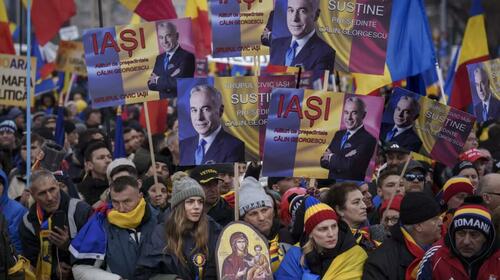 Romania has seen large protests against the annulment of November's presidential election and the banning of its winner (Vadim Ghirda, AP via France24)
Romania has seen large protests against the annulment of November's presidential election and the banning of its winner (Vadim Ghirda, AP via France24)
Georgescu was barred from running again. In February, Georgescu was arrested and questioned as he faced Orwellian allegations of disseminating "false information" and "incitement to actions against the constitutional order." Upon his release from custody, he was forbidden from appearing on mass media or creating social media accounts. Huge protests followed each move by the government to banish Georgescu from politics and discourse. In addition to charges of illegal campaign tactics, he's also been charged with helping to establish an organization “with a fascist, racist or xenophobic character.”
Campaigning last fall, Georgescu pledged to restore Romanian sovereignty and put an end to what he characterizes as subservience to NATO and the EU. He took a hard line against the presence of NATO's missile defense system that's based in Deveselu, southern Romania, calling it a "shame of diplomacy" that is more confrontational than peace-promoting. He has also pushed for Romania to pursue a non-interventionist policy in the Ukraine war, and said US arms-makers were manipulating the conflict.
Whatever his degree of nationalism, Simion is poised to become the third nationalist leading an eastern European country, alongside Hungary's Viktor Orban and Slovakia's Robert Fico -- that is, unless the leftists once again find a way to bar a popular right-wing candidate from victory.
-
Site: Zero HedgeFutures Slide, Jeopardizing Longest Winning Streak Since 2004; Dollar, Oil TumbleTyler Durden Mon, 05/05/2025 - 08:26
US equity futures are lower after the S&P gained 2.9% last week and erasing all post-Liberation Day losses. As of 8:00am, S&P futures were down 0.9%, putting the index on track to snap its longest streak of gains since 2004; Nasdaq futures dropped 1.0% with the Mag7 weaker, pulling markets lower, and cyclicals under pressure. Berkshire Hathaway stock is down 2% after Warren Buffett surprised Berkshire’s annual meeting on Saturday by announcing that he plans to step down at the end of the year. Overnight, Trump’s latest flurry of tariff comments gave little clarity on the path forward for markets: the president suggested some deals could come as soon as this week, but also that he had no current plans to speak with Chinese President Xi Jinping; he also said that a trade deal may come as soon as this week (India? Japan? S Korea?). Trading outside the US has been subdued to start the week, with several financial market including Japan, Hong Kong, China and the UK, closed today. The USD is weaker and bond futures are flat around 4.30%. Crude oil slumped after OPEC+ announced it is increasing supply (411k bpd), hurting oil prices but providing a disinflationary offset to tariff. Today’s macro data focus is on ISM-Services with the Fed on Weds.
In premarket trading, Berkshire Hathaway fell 2% after Warren Buffett announced he will be stepping down as CEO of Berkshire Hathaway at year-end, with Greg Abel set to take over upon board approval. The Mag 7 stocks were uniformly lower (Amazon -1.5%, Nvidia -1.1%, Meta -0.9%, Microsoft -0.6%, Apple -1%, Alphabet -0.6%, Tesla -0.7%). Gold mining stocks are rising as bullion advanced after its first back-to-back weekly loss this year (Barrick Gold +2.6%). Media stocks in decline after President Donald Trump announced Sunday that he plans to impose a 100% tariff on films produced overseas, extending his restrictive trade policies on US imports to the entertainment sector for the first time.(Netflix drops 4%; Warner Bros -2%; Paramount -1.5%; Disney -2%). Here are some other notable premarket movers:
- BioCryst Pharmaceuticals climbs 16% after the biotech posted revenue for the first quarter that beat the average analyst estimate.
- Freshpet slips 2% after the pet food maker cut its net sales guidance for the full year.
- Howard Hughes Holdings rose 8% after entering an agreement where Pershing Square will invest $900 million to acquire 9m newly issued shares of the company.
- ImmunityBio slumps 8% after the drug developer said it received a refusal-to-file letter from US FDA regarding its supplemental application to treat papillary disease.
- Sunoco declines 1.6% after agreeing to buy Parkland Corp. in a cash and stock deal valued at about $9.1b, including assumed debt.
Financial markets have steadied in the past two weeks as Trump dialed back his tariffs amid signs that trade talks are progressing, with the S&P 500 rallying for two straight weeks and notching nine successive days of gains. Still, a trade deal with China would be a prerequisite for the US benchmark to sustain the advance, according to strategists at Morgan Stanley led by Michael Wilson.
“Recent cyclical gains in equities don’t change the structural ‘Sell America’ theme,” said Charu Chanana, the chief investment strategist at Saxo Markets in Singapore. “Trade-deal optimism is giving way to the reality of complex, slow-moving negotiations.”
ISM Services data for April is due at 10am, with economists expecting it to decrease to 50.3 from 50.8. Attention will quickly turn to the Federal Reserve meeting on Wednesday, as Trump insists he doesn’t plan to fire Powell but continues pushing him to cut rates. Tyson Foods Inc. is due to report Monday morning, with the chicken and beef producer likely to shed light on consumption trends. Palantir Technologies Inc. is expected after markets close.
European equities were little changed, with the Stoxx 600 rising 0.1% to 536.75 as healthcare and media stocks were the biggest gainers, while energy and chemicals the worst performers. Here are the biggest movers Monday:
- Erste Group Bank shares advanced as much as 7.4% after it agreed to acquire a ~49% stake in Santander Bank Polska and 50% of Santander’s Polish asset management business TFI for a total cash consideration of €7 billion
- Polish bank stocks dropped
- Ratos shares gain as much as 8.8% to the highest level in more than a month after the Swedish investment firm reported Ebitda for the first quarter that beat the average analyst estimate
- European energy stocks declined as oil buckled on concerns of a global glut after OPEC+ agreed to another bumper output increase
- Astral Foods shares fall as much as 7.1%, the most since May 2024, after the agricultural animal-food company said earnings per share probably declined between 45% and 55% in the six months through March 31 from a year earlier
Earlier in the session, stocks in Asia advanced, helped by gains in Indian equities, as investors monitored evolving developments on the trade war front. The MSCI Asia Pacific Ex-Japan Index rose 1% to the highest since February, with Indian shares such as HDFC Bank and Mahindra providing a boost. Stocks in Taiwan fell 1.2%, the most in nearly two weeks, on concerns that a stronger currency would weigh on earnings of companies in the export-oriented economy. Investors are looking for the next cue after President Donald Trump suggested that his administration could strike trade deals with some countries as soon as this week. However, he also said he has no plans to speak with Chinese President Xi Jinping this week. In Australia, market players shrugged off Prime Minister Anthony Albanese’s historic election win as the S&P/ASX 200 Index fell 1%; The gauge was weighed down in part by Westpac’s shares, which fell on concerns about increased competition and headwinds from rate cuts. Markets in Japan, China and South Korea were closed for a holiday. In Singapore — which also saw the ruling party deliver a strong performance in weekend polls — the Straits Times Index ekes out a small gain.
In Taiwan, the biggest contributors to the benchmark index’s decline included Taiwan Semiconductor Manufacturing Co., Hon Hai Precision Industry Co. and Fubon Financial Holding Co. The local dollar surged as much as 5% on Monday, the biggest intraday gain in over three decades, on speculation exporters are rushing to convert their holdings of US dollars to the island’s currency.
In FX, Asian currencies surge on dollar weakness on a day when local holidays shutter most Asian equity markets. The Japanese yen leads major currencies higher gaining 0.5%, the Aussie is bolstered by a solid win for the incumbent Labor Party in weekend elections, and Taiwan’s currency surges as much as 5% to the highest in more than two years. Hong Kong’s dollar tests the top end of its range and the offshore yuan adds 0.2%.
In rates, treasuries are mixed in early US trading, with front-end yields lower as oil and stock prices slide after President Trump said he had no plans to talk to his Chinese counterpart this week. The 10Y yield was unchanged at 4.30%; front-end yields are 2bp-3bp richer on the day, 20- to 30-year cheaper by 1bp-2bp, leaving 2s10s and 5s30s spreads ~3bp wider.
In commodities, crude oil plunged as much as 5.1% in New York before paring the decline after OPEC+ agrees to a further increase in output over the weekend, bolstering global supplies. Gold advanced, and traded back over $3300.
Today's US economic calendar includes April final S&P Global services PMI (9:45am) and April ISM services index (10am). This week’s focal points include first coupon auctions of May-July quarter, beginning with 3-year note sale at 1pm New York time, and Wednesday’s Fed rate decision. Markets in Japan, Hong Kong, China and the UK were closed today.
Market Snapshot
- S&P 500 mini -0.8%
- Nasdaq 100 mini -0.9%
- Russell 2000 mini -0.9%
- Stoxx Europe 600 little changed
- DAX +0.4%
- CAC 40 -0.6%
- 10-year Treasury yield +9 basis points at 4.31%
- VIX +1.7 points at 24.38
- Bloomberg Dollar Index -0.3% at 1220.87
- Euro +0.3% at $1.1332
- WTI crude -2% at $57.14/barrel
Top Overnight News
- Warren Buffet is to step down as CEO of Berkshire Hathaway by year-end with Greg Abel to succeed Buffet as CEO later this year.
- Japan has no intention of using the possibility of selling its US government debt holdings for advantage in trade talks with Washington, Japanese Finance Minister Katsunobu Kato said Sunday. Nikkei
- Taiwan’s currency has recorded its largest two-day jump in decades, as life insurers moved to hedge their exposed US portfolios and markets fretted that a trade deal with Donald Trump might include the exchange rate. FT
- China has stopped publishing hundreds of statistics used by int’l investors to gauge the health of the domestic economy. WSJ
- Chinese exporter are stepping up efforts to avoid tariffs imposed by Trump by shipping their goods via third countries to conceal their true origin. FT
- President Donald Trump suggested that his administration could strike trade deals with some countries as soon as this week, offering the prospect of relief for trading partners seeking to avoid higher US import duties. BBG
- Trump administration officials are exploring ways of challenging the tax-exempt status of non-profits: WSJ.
- Trump said he is not worried about a US recession and that anything can happen, but he thinks they are going to have the greatest economy in history. Trump reiterated that the Fed should lower interest and said he won’t remove Fed Chair Powell. He also said he doesn’t know if people in the US deserve due legal process which is guaranteed by the constitution as he criticized the judiciary for opposing his plans to deport undocumented immigrants, according to an interview with NBC News.
- Trump defended mass deportations of undocumented migrants and complained about judicial rulings requiring due process. He also appeared to rule out attempting to run for a third term. BBG
- Incumbents in Australia and Singapore scored big election wins over the weekend, boosting both nations’ currencies in early trading. Anthony Albanese became the first leader in Australia to win consecutive elections in more than two decades. Lawrence Wong won his first Singapore election as PM. BBG
- Israel’s security cabinet voted to approve a new ground operation that includes occupying the Gaza Strip while also agreeing to a plan to take control over aid distribution that has been rejected by international humanitarian groups. WSJ
- Oil prices sank on concerns about a global glut after OPEC+ agreed to boost output by over 400,000 barrels a day from June and Saudi Arabia signaled more similar-sized increases may follow. BBG
- Apple plans an iPhone release schedule shake-up and new styles, according to The Information.
A more detailed look at global markets courtesy of Newsquawk
APAC stocks were ultimately mixed in holiday-thinned trade with most major markets in the region shut including in Japan, South Korea, China and Hong Kong, while tariff concerns lingered after 25% tariffs on auto parts took effect on Saturday and President Trump announced a 100% tariff for foreign films but had also noted a willingness to lower tariffs on China at some point because the levies now are so high that the world's two largest economies have essentially stopped doing business with each other. ASX 200 was led lower by weakness in the energy sector following a decline in oil prices due to the OPEC+ decision for another accelerated oil output increase, and with the top-weighted financial sector also hit post-Westpac's earnings, while the landslide victory by Australian PM Albanese's Labor party had little impact. TAIEX retreated with Taiwan-listed US Treasury ETFs heavily pressured amid headwinds from the recent surge in the local currency.
Top Asian News
- Australian PM Albanese’s Labor Party won an increased majority in the election on Saturday with at least 87 seats in the 150-seat parliament, while the opposition Liberal-National Coalition leader Dutton lost his seat which he had held for 24 years.
- Singapore’s ruling PAP won in 29 out of 32 constituencies contested in the election on Saturday and was confirmed the winner of 87 of 97 House seats.
- US President Trump said he would extend the TikTok deadline if there is still no deal.
- Foxconn (2317 TT) April revenues 25.54% Y/Y (prev. 23.4% Y/Y); on current visibility, operational outlook for Q2 anticipates Q/Q and Y/Y growth Impact of evolving global political and economic conditions will need continued close monitoring. The cloud and networking products segment is expected to maintain its growth momentum in Q2. The current period is traditionally an off-season, and primary product lines are entering a product transition period.
- PBoC Governor Pan has called on Asian nations to work against US tariffs, says global economic uncertainties are rising.
European bourses (STOXX 600 U/C) opened mixed and have traded rangebound throughout the morning thus far. Note: The FTSE 100 remains shut on account of the Early May Bank Holiday. European sectors hold a slight positive bias, with Insurance and Healthcare leading whilst Energy is the clear laggard. Healthcare is buoyed by strength in Novo Nordisk (+2.1%) after the FDA accepted the Co’s application for oral Semaglutide 25mg, which if approved, would be the first oral GLP-1 treatment for obesity. Energy is by far the clear laggard today, given the slump in oil prices, following the recent supply hike from OPEC+. Shell Plc is evaluating a potential acquisition of BP – though talks are still at an early stage. Shell is reportedly waiting for further declines in stock and oil prices before deciding whether to proceed with a bid.
Top European News
- EU is reportedly eyeing closer ties to the trans-Pacific CPTPP bloc to defend the rules-based global system, according to FT.
- French PM Bayrou reportedly wants to call a referendum to seek public support for a radical response to the budget deficit and levels of debt, wants to submit a comprehensive plan to cut the deficit, via Le Monde citing JDD Any such referendum could only be decided upon by President Macron. Such a referendum would allow the PM to circumvent the blockage they would face in the National Assembly due to him controlling only 210/577 seats. Bayrou reaffirms that any solution "does not lie in new taxes"
FX
- USD has kicked the week off on the backfoot after last week's attempted recovery and alongside a pullback in US equity futures. The USD has been notably weaker vs. APAC currencies with particular attention on the TWD which saw its largest one-day gain vs. the USD on Friday since 1988. On the trade front, US President Trump said he is willing to lower tariffs on China at some point but answered "no" when asked if he plans to speak with Chinese President Xi this week. DXY is currently caged within Friday's 99.39-100.32 range. US ISM Services is due later.
- EUR is stronger vs. the broadly weaker USD with incremental newsflow lacking and nothing of note on the trade front after the EU made the US a EUR 50bln trade offer last week. EZ Sentix data saw an improvement to -8.1 from -19.5 with the accompanying release noting that "one month after the massive shock that rocked investors with US tariff policy and sent sentix economic data into free fall, the smoke is clearing". EUR/USD has made its way back onto a 1.13 handle with a current session peak at 1.1347.
- JPY is currently the best performer across the majors with USD/JPY briefly breaching 144 to the downside. Hopes of a trade deal with the US remain high with Fox Business’s Gasparino reporting that a "bunch" of trade deal “frameworks” can be expected in the coming weeks; Japan was mentioned in the post. Furthermore on the trade front, Japanese Finance Minister Kato said on Sunday that Japan has no intention of using the possibility of selling its US Treasury holdings for advantage in trade negotiations with the US, according to Nikkei.
- GBP mildly firmer vs. the USD after a quiet period of UK-specific newsflow last week, but with focus now firmly on the BoE on Thursday. Cable struggled to hold above the 1.33 mark and returned to a 1.32 handle with a session peak at 1.3306.
- CHF is softer vs. the EUR and the worst performer across the majors in the wake of soft Swiss inflation data which saw both M/M and Y/Y readings print at 0%; both were forecast at 0.2%. Note, the March SNB projection pencilled in a Q2 average inflation rate of 0.2% Y/Y. As such, odds of a 25bps rate cut to 0% at the June meeting have risen to 100% vs. circa 80% on Friday. Despite the magnitude of the release, EUR/CHF is currently tucked within Friday's 0.9311-83 range.
- Antipodeans are both firmer vs. the USD and near the top of the G10 leaderboard, in tandem with the gains in the Asia FX space including CNH after President Trump suggested a willingness to lower tariffs on China at some point. For AUD specifically, Australian PM Albanese’s Labor Party won an increased majority in the election on Saturday with at least 87 seats in the 150-seat parliament.
- Taiwan Central Bank says the US did not ask the TWD to appreciate; urges market commentators not to speculate on TWD issue Taiwan does not manipulate the exchange rate. Taiwan's trade surplus with the US has widened in the recent years, mainly due to an increase in US demand for Taiwan's information and comms tech, rather than exchange rate factors. Volatility of TWD vs USD has widened, as foreign fund inflows to Taiwan stocks and companies' expectations of TWD appreciating. Governor stresses that the central bank did not attend US-Taiwan tariff talks, meaning no discussion of foreign exchange rate. Taiwan Central Bank Governor says expectations of strong appreciation are big, intervened appropriately.
Fixed Income
- USTs are trading in a very narrow 111-06 to 111-13+ band and essentially unchanged on the session. Currently entirely within Friday’s relatively expansive 111-02 to 112-01+ band. A quiet start to the week in terms of price action as Japan was away overnight and as such, there was no cash trade. Furthermore, the European session is devoid of the UK given the nation's early-May Bank Holiday. On the trade front, Trump said he is willing to lower the tariffs on China at some point as the current levels have essentially stopped trade. Elsewhere, the US announced 100% tariffs on movies produced in “foreign lands”; of note for China, the world’s second largest film maker. US ISM Services is due later.
- Bunds are also contained but in a slightly more expansive 130.69 to 131.14 band, the low just about took out last week’s 130.83 base. The low print occurred in the early European morning, as volumes picked up from very thin overnight levels as European players entered the fray. The EZ docket is light, Sentix for May came in much better than expected but still remains well into negative territory. No reaction to the data.
- French PM Bayrou reportedly wants to call a referendum to seek public support for a radical response to the budget deficit and levels of debt, wants to submit a comprehensive plan to cut the deficit, via Le Monde citing JDD. Any such referendum could only be decided upon by President Macron. Such a referendum would allow the PM to circumvent the blockage they would face in the National Assembly due to him controlling only 210/577 seats. Bayrou reaffirms that any solution "does not lie in new taxes"
Commodities
- Hefty losses across the crude complex following this weekend's OPEC+ confab, which saw an acceleration of production increases. To recap, OPEC+ countries with voluntary cuts agreed to raise oil output by 411k bpd in June in a virtual meeting held on Saturday. It was also reported that OPEC+ would likely approve in June another accelerated oil production hike of 411k bpd for July.
- Prices are off worse levels; WTI currently resides in a USD 55.30-57.10/bbl range while its Brent counterpart sits in a USD 58.50-60.24/bbl parameter.
- Precious metals trade in the green at the time of writing despite a relatively stable dollar, but amid ongoing uncertainty surrounding tariffs and geopolitics, coupled with recent losses in the complex as spot gold pulled back from record highs set on 22nd April. Spot gold resides in a current USD 3,237.79-2,374.71/oz range.
- Copper futures edge higher with the upside capped amid the holiday closures including its largest buyer, China. Sentiment this morning is mixed across the regions as participants await further macro newsflow. 3M LME copper resides in a USD 9,241.95-9,460.65/t range at the time of writing.
- OPEC+ countries with voluntary cuts agreed to raise oil output by 411k bpd in June in a virtual meeting held on Saturday. It was also reported that OPEC+ will likely approve in June another accelerated oil production hike of 411k bpd for July and could unwind voluntary cuts of 2.2mln bpd through October 2025 if compliance with quotas doesn’t improve as Saudi Arabia looks to punish some members for exceeding quotas, according to sources cited by Reuters. Furthermore, it was also reported that eight OPEC+ countries are to meet next on June 1st.
- UAE’s ADNOC set June Murban crude OSP at USD 67.73/bbl.
- UBS expects further seasonal increases in global oil demand in the next few months, given US driving season and increasing Middle-East temperatures. Sees Brent at USD 68/bbl in the coming months.
- EU plans to propose banning Russian gas imports by the end of 2027, according to Bloomberg.
- Russian Oil product exports from Black Sea Port of Tuapse planned at 0.81mln tons in May (prev. scheduled 0.864mln tons in April), via Reuters citing sources.
- Goldman Sachs does not expect silver to catch up with the gold rally amid higher central bank gold demand which has structurally lifted the gold-silver price ratio If recession occurs, GS estimates that acceleration in ETF inflows would lift gold price to USD 3,880 by year-end. With Chinese solar production now slowing amid oversupply, high recession risk, central bank gold buying remaining strong in 2025, GS expects gold to continue "outglittering" silver. "We reiterate our structural bullish gold view with a base case of USD 3,700/toz by year-end and of USD 4,000 by mid-2026."
Geopolitics: Middle East
- A missile fired by Yemen’s Houthis hit the grounds of Israel’s Ben Gurion Airport after interception failed, while six were reportedly injured, but none seriously, according to The Times of Israel. It was separately reported that Yemen’s Houthis said they are working on imposing a comprehensive air blockade on Israel by targeting its airports.
- Israeli PM Netanyahu said Israel will respond to Houthis and their 'Iranian terror masters' at a time and place of its choosing, while it was also reported that Israel’s army chief issued an order for reservists to expand operations in Gaza.
- Israel is readying a "massive response" to Houthis and Iran after the airport missile attack, according to the Washington Examiner.
- Iran’s Defence Minister warned they will respond with force if Iran is attacked and said if a war is initiated by the US or Israel, Iran will target their interests, bases and forces wherever they may be and whenever deemed necessary, according to state TV.
- Israel's cabinet unanimously approved the expansion of the army's operation in the Gaza Strip.
- Israel called on Qatar to stop playing both sides with its double talk and decide if it is on the side of civilisation or if it is on the side of Hamas, according to the Israeli PM’s office.
- Israeli PM Netanyahu "made it clear that the [new] plan differs from its predecessors in that [Israel is] moving from the method of raids to occupying the territories and remaining in them," according to a statement by the PM office.
- "Iran denies aiding Yemen's Houthis, after missile strike on Israeli airport", according to AFP.
- Israel's scaled up offensive within Gaza could go as far as the seizing of the entire enclave, via Reuters citing an Israeli official.
- Iranian Foreign Ministry says "We await Oman's point of view as the sponsor of dialogue on the resumption of talks with Washington and we are ready for that", via Al Jazeera.
Geopolitics: Ukraine
- Ukraine launched drone attacks targeting Moscow, according to the mayor of Moscow. It was also reported that the Russian aviation watchdog closed one of Moscow's key airports after reports of a drone attack targeting the Russian capital.
- US President Trump said they had some very good discussions about Russia and Ukraine over the weekend.
- Russian President Putin said they have enough strength and the means to bring the conflict with Ukraine to a logical conclusion, while he said there has been no need to use nuclear weapons in the conflict and hopes there never will be.
- Russia’s Kremlin said President Putin’s offer to Ukraine of a 3-day ceasefire to coincide with World War Two commemorations was a test to assess Kyiv’s readiness for peace and Ukraine’s refusal to agree shows ‘neo-Nazism’ lies at the foundation of the Ukrainian government.
- Russian senior security official Medvedev said US President Trump’s claim that the US did more than any other country to win World War Two is pretentious nonsense, according to TASS.
- Chinese President Xi will conduct a state visit to Russia and attend a war victory celebration on May 7th-10th, while Chinese President Xi and Russian President Putin are to discuss the development of a comprehensive strategic partnership.
Geopolitics: Other
- US Army Pacific Commander General Clark said the region is more dangerous now due to China’s aggressive behaviour and that China’s rehearsals of a Taiwan blockade ‘leave you speechless’.
US Event Calendar
- 9:45 am: Apr F S&P Global U.S. Services PMI, est. 51.2, prior 51.4
- 9:45 am: Apr F S&P Global U.S. Composite PMI, est. 51.2, prior 51.2
- 10:00 am: Apr ISM Services Index, est. 50.25, prior 50.8
DB's Jim Reid concludes the overnight wrap
Filling in for Jim with the UK off for the May Day bank holiday and as we enter a week that should see attention turn back towards central banks, with the latest Fed (Wed) and BoE (Thu) decisions due. These come as markets have largely shaken off the tariff-driven stress of the past few weeks, as rising optimism on tariff de-escalation and Friday’s solid US payrolls print brought the S&P 500 back above its pre-Liberation Day level, with the index posting its longest winning streak since 2004 (see weekly recap below). Admittedly, the recovery has been far from even across asset classes. A notable laggard is the US dollar, trading nearly -4% below April 2 levels this morning. Investors will continue to keenly watch the tariff headlines and peruse the latest evidence of tariff impacts in this week’s data ranging from the US April ISM services (today) to German factory orders (Wed) and China’s April trade data (Fri).
The full day by day week ahead is at the end as usual, but the main highlight will be the Fed's decision on Wednesday and Chair Powell's press conference afterwards. Our US economists expect the Fed to keep rates steady and avoid explicit forward guidance about the policy path ahead. They see the overall tone as likely to echo recent Fed comments that the administration's policies are likely to push the economy away from the Fed's dual mandate objectives for a period of time but that monetary policy is "well positioned" to respond to the evolving outlook. They continue to see the next rate cut coming in December and while risks are tilted towards earlier easing, they see this as contingent on a weaker labour market rather than the Fed delivering pre-emptive cuts. Fed funds futures are pricing a 37% chance of a cut by the next meeting in June, with a full 25bp cut priced by July.
In an interview on Sunday, President Trump repeated calls for the Fed to cut rates but appeared to rule out removing Powell before the end of his term in May 2026. Meanwhile on trade, Trump suggested that he would lower tariffs on China “at some point” and that some trade deals could come as soon as this week, but also said that he had no plans to speak to China’s Xi this week. US equity futures are trading lower following the news, with the S&P 500 and NASDAQ 100 down -0.73% and -0.72% respectively. So perhaps some doubts whether last week’s increasing optimism was fully justified. Most Asian markets are closed today but the big story there is that of Asian currencies gaining further ground against the dollar. The Taiwanese dollar is +2.97% higher at its highest in over two years, while Malaysia’s ringgit (+1.41%) has risen to its strongest since October. Meanwhile, China’s offshore yuan (+0.17%) hit its highest in almost six months at 7.2009 per dollar.
With East Asia being a major energy importer, those currency moves may also be supported by the latest fall in oil prices after OPEC+ agreed on Saturday to increase oil production by another 411k barrels a day starting in June. The move follows a similar increase in May and confirms a stark turnaround away from the production cuts that have persisted since 2022.Reuters and Bloomberg reported thatSaudi Arabia has threatened to continue this pace of production increases if other OPEC+ countries don’t stop producing above quota levels. Brent crude is trading -3.72% lower at $59.01/bbl as I type, its lowest level in four years and following on a -8.34% drop last week. With oil now down more than -20% YTD, energy prices have become a sizeable disinflationary factor even as core inflation remains above target across most DM economies.
In terms of the rest of the week ahead, central banks will also be in focus in Europe, with policy decisions from the UK, Norway and Sweden all due on Thursday. Our UK economist expects the BoE to deliver a 25bp cut that would take the Bank Rate to 4.25% (see preview here), while Norges and Riksbank are expected to keep rates on hold. Meanwhile, the ECB will hold an informal meeting on May 6-7 to discuss its 2025 monetary policy strategy assessment.
Turning to economic data, in the US the main test ahead of the Fed will be today’s April ISM services reading, which our economists see declining to 50.2 from 50.8. That comes as the April data so far, including a decent US ISM manufacturing print last week, have shown few signs of either the US or the global economy ‘breaking’ from the tariff turmoil even as sentiment indicators paint a worrying picture. It will be a pretty quiet data week in Europe, with Germany’s factory orders (Wed) and industrial production (Thu) prints the highlights, while in Asia the April trade figures out of China (Fri) are expected to show a material slowing amid the tariff disruption.
In corporate earnings, key US releases include Palantir, AMD, Walt Disney and Uber. In Europe, earnings from the likes of Novo Nordisk, Siemens Energy, AP Moller-Maersk, BMW, AB InBev and Rheinmetall will be of extra interest in light of the trade tensions.
In other weekend news, the preliminary results from Saturday’s federal election in Australia saw the centre-left Labour party retain power with an increased majority. Following on Canada’s election last Monday, this marks the second G10 election in a week that has seen left-leaning parties come back from behind in the polls to retain power, seemingly benefitting from a ‘Trump effect’.
Recapping last week in detail, risk assets continued to recover, driven by more encouraging signals on tariffs as well as better than expected US economic data. On the latter, the April employment print on Friday saw the US adding a stronger than expected +177K in nonfarm payrolls (vs +138K expected). Private payrolls increased +167K (vs +125k exp), while the unemployment rate was in line at 4.2%. Revisions for the previous two months (-58k) did take off some of the headline shine but overall the print defied fears that volatility following Trump’s Liberation Day announcements could put a dent in the labour market performance.
Equities responded jubilantly to payrolls, as the S&P 500 (+1.47%) advanced for a ninth session running on Friday, the longest such run since 2004, to end the week +2.92% higher. This left the index +0.28% above its level on April 2 prior to the reciprocal tariff announcements. Tech stocks outperformed as strong earnings from Microsoft and Meta outweighed subdued results from Apple and Amazon, with the Mag-7 up by +3.51% (+1.33% Friday) and the NASDAQ by +3.42% (1.51% Friday). European equities saw similarly strong gains, with the STOXX 600 rising +3.07% (+1.67% Friday) and the DAX up +3.80% (+2.62% Friday).
The stronger payrolls print on Friday drove Treasury yields higher, with the 2yr yield rising +12.4bps to 3.82% (+7.5bps on the week) after hitting 6-month lows earlier in the week. 10yr yields moved +9.0bps higher to 4.31% (+7.3bps on the week). Easing trade risks and higher yields helped the dollar index (+0.56%) post a second consecutive weekly advance. However, while the dollar gained against the euro and the yen, it lost ground to most Asian currencies, with strong gains for the Taiwanese Dollar (+5.50%) and South Korean Won (+2.79%). On the other hand, gold (-2.39%) saw its biggest decline in nine weeks amid the risk-on tone.
In Europe, bonds also sol off with yields on 10yr bunds up +8.9bps on Friday to end the week +6.4bps higher at 2.53%. This increase followed stronger-than-expected April inflation data, with euro area core inflation coming in at +2.7% (vs +2.5% expected). However, our European economists expect the ECB to look through the upside surprise for now given that other underlying indicators and wage data continue to support services disinflation.
-
Site: Catholic Herald
NEW YORK – The Catholic Herald, one of the world’s oldest Catholic publications, has announced new investors and a strategic partnership to drive its global expansion, digital development and the commercialization of its 137-year archive.
Award-winning filmmaker Tim Moriarty, founder and CEO of Castletown Media, has joined The Catholic Herald’s mission-aligned investor group as a strategic advisor. Fresh from the release of Carlo Acutis: Roadmap to Reality, Moriarty adds deep expertise in film, television and digital storytelling. Castletown Media will collaborate with The Catholic Herald on new digital initiatives and innovative content formats.
Rerum Novarum Partners, a Canadian-based advisory, strategy, and finance firm focused on supporting Catholic-led businesses led by Travis Callaway, has also made a direct equity investment, adding further momentum to the Herald’s growth plans.
“The Catholic Herald is building for the future, and the support of these new partners positions us to meet the moment as global interest in faith and values-driven media continues to rise. We are excited to build on our 137-year foundation with new energy, new ideas, and global reach,” said Mark Ackermann, CEO of The Catholic Herald Institute.
These investments and broader strategic alignment will support The Catholic Herald’s digital upgrades, expansion of global content partnerships, and the development of its unmatched 137-year archive – which includes contributions from GK Chesterton and JRR Tolkien – and in-depth reporting on major world events.
“The Catholic Herald is a treasure trove of Catholic history and culture, and its newsroom continues to deliver outstanding journalism,” said Tim Moriarty, CEO of Castletown Media. “We’re eager to help translate both the Herald’s rich archive and its current reporting into compelling, digital-first formats that will reach and inspire the next generation of Catholics worldwide.”
This announcement follows a series of major developments for The Catholic Herald since its acquisition by GEM Global Yield LLC SCS in 2022, including the opening of a New York office, a global expansion strategy and a landmark AI partnership to activate its archive.
Media Contact: MarkAckermann@thecatholicheraldinstitute.org
About The Catholic Herald
Founded in 1888, The Catholic Herald is one of the world’s oldest Catholic publications. With operations in London and New York, it delivers faith-driven journalism and multimedia content through a Catholic lens. https://thecatholicherald.com/About Castletown Media
Founded in 2017, Castletown Media is an award-winning film studio with its own marketing and PR division. Recent box-office standouts include Carlo Acutis: Roadmap to Reality (2025), Jesus Thirsts: The Miracle of the Eucharist (2024),and Mother Teresa: No Greater Love (2022) https://www.castletownmedia.com/About Rerum Novarum Partners
Rerum Novarum Partners is a Canadian-based advisory, strategy, and finance firm focused on supporting Catholic-led businesses, startups, and mission-aligned ventures. https://www.rerumnovarumpartners.com/Photo: Taken from www.castletownmedia.com

The post The Catholic Herald: new investors, and a strategic partnership with Castletown Media first appeared on Catholic Herald.
The post The Catholic Herald: new investors, and a strategic partnership with Castletown Media appeared first on Catholic Herald.
-
Site: Zero HedgeChildren Advised Against Going Outside In Oregon Due To Air QualityTyler Durden Mon, 05/05/2025 - 07:45
Parts of Oregon are experiencing pollution levels deemed “unhealthy for sensitive groups,” according to an AirNow map from agencies including the EPA and NOAA.
Affected areas include Baker City and the Wood River Valley, northeast of Medford, according to Newsweek.
The Newsweek report says cites health officials who say that children, seniors, and people with respiratory conditions face increased risks.
A South Coast AQMD spokesperson previously told Newsweek that exposure to particle pollution “can cause premature death in people with heart or lung disease, cause heart attacks, aggravate asthma, decrease lung function, and cause respiratory symptoms like coughing and difficulty breathing.”
The Air Quality Index (AQI) categorizes pollution on a 0–500 scale. Levels from 101–150 (orange) indicate air that is “unhealthy for sensitive groups.”
Scores from 0–50 (green) indicate good air quality, while 51–100 (yellow) is moderate, with possible risks for sensitive people. Levels of 101–150 (orange) are unhealthy for sensitive groups like children and those with heart or lung conditions. Readings from 151–200 (red) are unhealthy for everyone, 201–300 (purple) are very unhealthy with emergency health warnings, and 301–500 (maroon) are hazardous, posing serious risks to the entire population.
Jonathan Grigg, professor of pediatric respiratory and environmental medicine, noted: “There are vulnerable groups and classically they are children because they've got an extra issue to do with their lungs developing.” He added, “There are also very clear links between inhaling particles and earlier death from both respiratory and cardiovascular diseases,” and that air pollution worsens conditions like asthma.
Air quality levels remain under close watch and are subject to change with the weather.
-
Site: AsiaNews.itA 65-year-old Jesuit, he has led the Catholic community of the great metropolis for more than three years, putting the challenge of unity and education of young people first in a difficult social context after the events of 2019. He knows the dioceses of the People's Republic of China well, having already made three official trips to Beijing, Guangdong and Shanghai.
-
Site: Zero HedgeFirst Driverless Heavy Duty Trucking Service Launched On US Public RoadsTyler Durden Mon, 05/05/2025 - 07:20
Authored by Naveen Athrappully via The Epoch Times (emphasis ours),
Pennsylvania-based Aurora Innovation, Inc. has launched commercial self-driving trucking service in the state of Texas, conducting customer deliveries between Dallas and Houston starting this week, the company said in a May 1 statement.
 Semi-trucks line up near Pier J to retrieve shipping containers from a China-based ship at the Port of Long Beach, in Long Beach, Calif., on April 4, 2018. Bob Riha Jr./Reuters
Semi-trucks line up near Pier J to retrieve shipping containers from a China-based ship at the Port of Long Beach, in Long Beach, Calif., on April 4, 2018. Bob Riha Jr./Reuters
The driverless trucking service will use Aurora’s flagship product “Aurora Driver,” a self-driving system that can “see over 450 meters ahead,” according to the company. Aurora says the truck is capable of spotting and reacting to pedestrians “up to 11 seconds sooner than human drivers at highway speeds at night.”
“To date, the Aurora Driver has completed over 1,200 miles without a driver,” said the statement. “The milestone makes Aurora the first company to operate a commercial self-driving service with heavy-duty trucks on public roads.”
“Aurora plans to expand its driverless service to El Paso, Texas, and Phoenix, Arizona, by the end of 2025.”
Aurora’s launch customers are logistics companies Uber Freight and Hirschbach Motor Lines, both of which have had “long-standing supervised commercial pilots with Aurora.”
Aurora Driver is reportedly an SAE L4 self-driving system that is being deployed for long-haul trucking for the first time.
SAE L4 refers to Level 4 of the nonprofit SAE International’s measure of driving automation that runs from Level 0 to 5.
At the L4 level, the features of the driverless system can “drive the vehicle under limited conditions and will not operate unless all required conditions are met,” according to the SAE website.
Pedals and steering wheels may or may not be installed in SAE L4 vehicles. The automated features of the system won’t require a person sitting inside the vehicle to take over driving.
“We founded Aurora to deliver the benefits of self-driving technology safely, quickly, and broadly,” said Chris Urmson, CEO and co-founder of Aurora. “Riding in the back seat for our inaugural trip was an honor of a lifetime—the Aurora Driver performed perfectly.”
Meanwhile, autonomous trucks pose a critical employment issue for truck drivers.
In an April 8 statement, the International Brotherhood of Teamsters, one of the largest labor unions in the United States, said they testified at the Nevada state capitol, asking lawmakers to support Senate Bill 395.
The bill requires that all commercial vehicles weighing over 26,000 pounds have a trained human safety operator behind the wheel.
“For Big Tech companies to think they can come into any state and replace the jobs of hardworking union members with this dangerous and inferior technology is an insult to professional drivers everywhere,” said Peter Finn, president of Teamsters Joint Council 7.
“SB 395 is critical to protecting the middle class. That is why we are demanding that Nevada lawmakers vote in favor of this legislation.”
The bill passed the Nevada Senate on April 16 and is currently under consideration in the Assembly, where it was recently referred to the Committee on Growth and Infrastructure.
Aurora Safety, DOT Relaxes Rules
Aurora said its flagship truck is fitted with a powerful computer and sensors that enable it to operate safely on highways.
“In over four years of supervised pilot hauls, the Aurora Driver has delivered over 10,000 customer loads across three million autonomous miles,” the company said.
“It has also demonstrated extraordinary capabilities, including predicting red light runners, avoiding collisions, and detecting pedestrians in the dark hundreds of meters away.”
Before beginning operations, Aurora had completed a “safety case” for its vehicles. A safety case is a documented assurance of the vehicle maintaining safety.
The company said it had briefed several government entities about Aurora Driver’s readiness for driverless operations, including the National Transportation Safety Board, National Highway Traffic Safety Administration, Texas Department of Public Safety, and Texas Department of Transportation.
Aurora’s driverless truck service launch comes as the Department of Transportation (DOT) said on April 4 that it would ease some of the safety regulations involved in the development of self-driving vehicles.
Specifically, the agency will expand the Automated Vehicle Exemption Program to domestically-produced automated vehicles (AVs) as well. The program currently only applies to imported AVs.
“This Administration understands that we’re in a race with China to out-innovate, and the stakes couldn’t be higher,” said Secretary of Transportation Sean P. Duffy in a April 24 statement. “As part of DOT’s innovation agenda, our new framework will slash red tape and move us closer to a single national standard that spurs innovation and prioritizes safety.”
Advocacy group Advocates for Highway and Auto Safety criticized the decision, saying that “troubling incidents” involving automated vehicles have already occurred in multiple cities.
If proper safety regulations, safeguards, transparency, and accountability are not maintained regarding the issue, the deployment of AVs could result in “deadly consequences,” it said.
John Bozzella, CEO of Alliance for Automotive Innovation, welcomed the DOT move, calling it “Unequivocally good—and overdue—news,” the group said in an April 24 statement.
“Yes, we’ve got to move smartly and safely. But this announcement shows the administration is also proceeding with a sense of urgency, so we don’t cede AV leadership to China and other countries. Time is of the essence,” he added.
-
Site: PaulCraigRoberts.org
Trump Claims US Did ‘More Than Any Other Country’ to Win World War II
Trump’s claim is ridiculous. He is making a fool of himself. It was the Soviet Army that defeated Germany. All of the significant battles were in Russia. The enormous differences in battle deaths prove it.
Total US battle deaths (Germany and Japan): 291,557. Total WW II US military deaths (all causes): 407,316. The war with Japan accounted for 111,606 of the US military deaths.
Russian WW II dead: 27,000,000.
Germany’s war dead (including civilians): 18,000,000.
Trump’s false claim does not create an image of a person whose veracity will be trusted by the Kremlin.
-
Site: PaulCraigRoberts.org
Trump Is Destroying America, but He Is Making Israel Great
Paul Craig Roberts
Presidents, like corporate CEOs and everyone else, have a limited span of control. They can’t know everything or focus on everything. Most presidential decisions are just acceptances of subordinate’s decisions. I know it. I have been there. I have seen it, both the President of the United States and the CEOs and boards of corporations are dependent on information that comes from below. And often in the case of government the information from below is from outside.
We are now witnessing this in the Trump regime. Real ID is a George W. Bush/Cheney regime measure from the fake “war on terror” that was used by Washington to remove Arab governments opposed to Greater Israel. Until Trump, no president wanted the flack of imposing it on “free” American citizens, thus revealing to them how unfree they are. But the police state crowd see Trump’s concern with illegals as an opportunity to finally get their old handiwork from the “war on terror” Implemented. And Trump has obliged.
We are also witnessing the ruling establishment’s success in removing Trump’s people in the hopes of replacing them with one of theirs. Having learned nothing from failing to stand by General Flynn, Trump’s national security adviser for ten minutes in Trump’s first term, Trump has repeated his mistake. He kicked his national security advisor upstairs to be US Ambassador to the UN. Why? Because someone mistakenly included the Jewish editor of the leftwing magazine, The Atlantic, in on a meeting about bombing Yemen.
Clearly, the invitee list was a staff responsibility. The real problem is that Atlantic editor Goldberg did not announce at the meeting that he doubted he was supposed to be present in a national security discussion. Instead he kept silent, took notes, and published an article. I do think that his dishonest behavior displaying a total lack of integrity is indictable. Instead of kicking his national security advisor upstairs, Trump should have had AG Bondi arrest and prosecute Goldberg for revealing national security secrets. But Trump would be too afraid to treat an Israeli-protected person that way. So Trump sacrificed his national security advisor.
Trump’s failure signals weakness or inattention, and now they are after his Defense Secretary. Same kind of charge. Hegseth let some confidential information out via some communication service to the delight of the Israel Lobby, which is using the mistake to have Hegseth removed.
People are confused about this, because Hegseth is a Zionist, a full-time supporter of Israel. What got Hegseth in trouble is that he listened to knowledgable Pentagon personnel who explained to him that a US war with Iran for Israel was fraught with danger. He was advised, correctly, that once the US ignited a war Washington had no ability to control it. The consequence could be the destruction of Washington’s bases in the Middle East and loss of every Navy aircraft carrier in the vicinity. Hegseth backed off, Israel hit the roof, and Hegseth had to fire the advisers who told him the truth.
According to the liberal/left, the Democrats, and the media, Trump is tyrannical strength itself, imposing dictatorship on America, but neither Trump nor his administration have the strength to stand up to Israel.
What Trump is going to do is to make Israel great, not America.
All over the Western world it is already the case in many countries, such as Great Britain and Germany that criticism of Israel or of Jews is a criminal offense, and it is becoming the same in every Western country, eventually even in Russia. In America the Trump regime is deporting students who protest Israel’s American-supported genocide of the Palestinians. Long ago Israeli propagandists convinced Americans that every Palestinian, even 3-year old children, was a terrorist who wore bomb vests in order to kill Israelis. All the while Israel killed Palestinians, 3-year olds included, by the bomb load.
Even in the Red State of Texas, if you protest Israel’s genocide of Palestine, you are ineligible to have a state contract.
America is totally owned by Israel. So is Trump. So how can America be “made great again”?
-
Site: PaulCraigRoberts.org
If you took the Covid “vaccine,” you worsened your chance of survival
If you took the Pfizer Covid “vaccine,” you face a 37% higher chance of “vaccine” caused death than if you took the Moderna “vaccine.”
In Florida the Pfizer death shot killed 847 people per 100,000. The Moderna death shot killed 618 people per 100,000.
-
Site: PaulCraigRoberts.org
Epidemiologist Nicolas Hulscher reveals alarming new data on mRNA-driven mass harm and death
-
Site: PaulCraigRoberts.org
-
Site: PaulCraigRoberts.org
This is US Representatie Marjorie Taylor Greene: the Firebrand Republican Member of the house:
https://x.com/RepMTG/status/1918351681374581181
She says Trump is losing support.
-
Site: Mises InstituteAlthough politicians, pundits, and the media claim that a trade deficit is harmful to a country, the reality is much different. In a free economy, individuals interact with each other in mutually-beneficial exchanges. As Murray Rothbard noted, free exchanges do not produce winners and losers.
-
Site: Catholic Herald
As the conclave to elect a new pope approaches, the Catholic Bishops’ Conference of the Philippines (CBCP) is defending the record of Cardinal Luis Antonio Tagle, former Archbishop of Manila, in addressing sexual abuse by clergy in the Southeast Asian country.
In a statement on Saturday, the CBCP said Tagle has advocated for a Church that listens and “acts decisively” to help victims of abuse.
The bishops’ conference did not explain the context of the 560-word statement, but the Philippine Daily Inquirer reported that it appeared to be “a response to recent foreign media reports which accused Tagle of not being vocal enough about such cases in the country.”
BishopAccountability.org, a watchdog group that monitors cases of clergy sexual abuse, has questioned Tagle’s ability to confront abusive priests if he were elected pope.
Tagle, 67, is considered papabile in the conclave to elect the 267th leader of the Catholic Church. The conclave of 133 cardinal electors, including Tagle and two others from the Philippines, begins on Wednesday.
“If Cardinal Tagle cannot even get his brother bishops from his home country to publish guidelines, what on earth can we expect him to achieve as pope of a global Church?” said BishopAccountability.org co-director Anne Barrett Doyle at a press conference on Friday.
The CBCP, however, said its Pastoral Guidelines on Sexual Abuses and Misconduct by the Clergy had already been circulated as early as September 2003.
These guidelines “were developed to address allegations and actual cases of sexual abuse and misconduct by clergy in the Philippines,” according to the CBCP’s statement, titled Reaffirming Our Commitment to Safeguarding and Accountability.
“They emphasised pastoral care for victims, the healing of communities, assessment of the accused, and appropriate sanctions for offenders,” said the CBCP in the statement signed by its secretary general, Mgr Bernardo Pantin, a canon lawyer trained at the Angelicum in Rome.
The CBCP cited the role of Tagle, who served as Bishop of Imus, a populous diocese south of Metro Manila, from 2001 to 2011, and as Archbishop of Manila from 2011 to 2019.
“In particular, Cardinal Luis Antonio G. Tagle, during his tenure as Bishop of Imus and later as Archbishop of Manila, actively participated in the development and implementation of these guidelines. He has consistently advocated for a humble and responsive Church that listens to the cries of the wounded and acts decisively to protect the vulnerable,” the statement said.
The bishops’ conference added that since his move to Rome as pro-prefect of the Dicastery for Evangelisation (formerly prefect of the Congregation for the Evangelisation of Peoples), Tagle is no longer involved in disciplining Filipino priests.
Tagle has been based in Rome since 2020.
“Since his appointment to a full-time position in the Roman Curia, Cardinal Tagle no longer holds direct authority over any diocese in the Philippines. Consequently, he is not involved in the governance or disciplinary matters of Philippine dioceses. The responsibility for addressing allegations of misconduct by clergy rests with the respective diocesan bishops or religious superiors,” the CBCP said.
The CBCP also emphasised its general commitment to curbing clergy sexual abuse, noting that it had established an Office for the Protection of Minors and Vulnerable Persons as directed by the Holy See. Each Filipino diocese is mandated to set up a similar office, “ensuring that every Church institution becomes a safe space for all.”
“The CBCP remains steadfast in its commitment to transparency, accountability, and the protection of all members of the Church, especially the most vulnerable. We continue to seek guidance from the Holy See and collaborate with civil authorities to ensure that justice is served and that the Church becomes a beacon of hope and safety for all,” the statement said.
Tagle, a charismatic prelate known for his simplicity and love for the poor, is often called the “Asian Francis” and is widely seen as a leading contender in the conclave.
He has faced criticism, however, over his administrative abilities, particularly during his tenure as president of Caritas Internationalis from 2015 until 2022.
Critics point to his failure to prevent the mismanagement of Caritas under its former secretary general, Aloysius John.
He has also been questioned over the appointment of Fr Luk Delft, a Salesian priest convicted of child sexual abuse in 2012, who was later named Caritas director in the Central African Republic. Tagle was reportedly aware of Delft’s criminal conviction as early as 2017.
Tagle has also been attacked online by conservative Catholics over a viral video in which he sings John Lennon’s “Imagine.”
LifeSiteNews, a conservative Catholic website, described the performance as “a betrayal of Catholic teaching,” calling the song “the atheist anthem rejecting religion, heaven, and Christ’s Kingship.”
The website criticised the lyrics, such as “No hell below us… no religion too,” as contrary to Catholic doctrine.
Nevertheless, many Filipinos continue to support Tagle as a potential first Filipino and Southeast Asian pope—an aspiration cherished by a country of 86 million Catholics, the largest Catholic population in Asia.
Social media posts, including TikTok videos, have emerged in recent days calling for a Tagle papacy following the death of Pope Francis.
Fr Jerome Secillano, a spokesman for the CBCP, has already warned Filipinos not to campaign for Tagle, to no avail. Filipino Cardinal Pablo Virgilio David, one of the cardinal electors and a college classmate of Tagle, also reminded Filipino Catholics: “There are no candidates in a conclave.”
Photo: Manila Archbishop Luis Antonio Cardinal Tagle prays during the Evening Mass of the Lord’s Supper at the Manila Cathedral on April 13, 2017.(NOEL CELIS/AFP via Getty Images)

The post Philippine bishops defend Cardinal Tagle’s record ahead of conclave first appeared on Catholic Herald.
The post Philippine bishops defend Cardinal Tagle’s record ahead of conclave appeared first on Catholic Herald.
-
Site: Novus Motus LiturgicusThe feast of St Vincent Ferrer was traditionally assigned to the day of his death, April 5th, but I say “assigned to” instead of “kept on” advisedly; that date falls within either Holy Week or Easter week so often that its was either translated or omitted more than it was celebrated on its proper day. [1] For this reason, in 2001 the Dominicans moved him to today; on the general calendar of the Gregory DiPippohttp://www.blogger.com/profile/13295638279418781125noreply@blogger.com0
-
Site: The Remnant Newspaper
-
Site: AsiaNews.itToday's news: Since the March 28 earthquake, the Burmese junta has launched more than 243 attacks and caused at least 200 deaths, according to UN estimates;Ten dead and at least 60 injured in the capsizing of two boats in the Chinese province of Guizhou;The 'popemobile' used by Francis in the Holy Land in 2014 becomes a mobile clinic for the children of Gaza;Landslide victory for the Pope in the Singapore elections. Colombo and Tokyo strengthen defense cooperation.
-
Site: OnePeterFive

According to James Hitchcock, a professor of history at Saint Louis University, “St. Pius V…was an ascetic Dominican who had been head of the Inquisition and who vigorously implemented the decrees of Trent, including publishing the Catechism, Missal, and Breviary…authorized by the Council.”[1] In this article, I will highlight the Holy Father’s reform of the Roman Missal. First…
-
Site: The Remnant Newspaper
-
Site: Real Investment Advice
Japan holds over $1 trillion of US Treasury securities, making it the largest sovereign holder by a significant amount. Thus, the possibility has arisen that Japan might use its extensive holdings as leverage in tariff negotiations. Japanese Foreign Minister Katsunobu Kato said Japan has not made a decision on whether to include its holdings as part of the negotiations, but he did state the following:
It does exist as a card. Whether or not we use that card is a different decision.
Given Japan’s historical purchases and strong demand at recent Treasury auctions, Japan might opt to buy more Treasuries to signal goodwill and stabilize markets. Moreover, they could codify Treasury purchase or holdings minimums into an agreement. A deal could also be structured so that Japan agrees to hold more long-term debt as a percentage of its total holdings. The problem facing Japan with any requirements is that its Treasury holdings result from its currency market interventions. If Japan wished to support the yen versus the dollar, it would need to sell Treasuries and convert the dollars to yen.
Looking ahead, Japan may not be the only country able to use Treasury holdings as leverage in negotiations with the US. A deal with Japan or another major holder, as shown below, could be instrumental in other similar deals. Such deals involving Treasuries could be a creative way for the Treasury Department to drum up demand for its bonds, thus lowering its interest expenses.

What To Watch Today
Earnings

Economy

Market Trading Update
Last week, we discussed that the market backdrop improved markedly following commentary from the White House that eased concerns about tariffs. To wit:
"The market rallied above the 20-DMA this past week as investors found some "silver linings" to the ongoing tariff dispute. Despite China saying "no negotiations" had started with the U.S., comments from both President Trump and Scott Bessent suggested that the Administration would "be nice" to China and that a "very good deal" could be done between the two countries. As we have noted previously, given the more extreme oversold condition of the market, any "good news" would allow investors to push stocks higher."
This past week, two reports confirmed the economy is slowing. First, there was the weak GDP report, which showed growth of roughly one percent, after discounting the impact of the trade deficit. Secondly, while the employment number was higher than expected, the job growth trend is also slowing. However, those reports should have tempered market enthusiasm as they reduced hopes for Fed rate cuts. However, the market pushed higher as investors raced to jump back into "risk assets" as the market cleared initial resistance at the 20-DMA and reversed all of the "Liberation Day" losses.
As we noted in "Hope In The Fear," it would take much for the market to mount a sizeable rally given the extremely negative sentiment and positioning. Last week, the potential break in the China stalemate and non-recessionary data fed the "short-covering" rally, and pushed the index above the 50-DMA. That rally has also reversed the more extreme bearish sentiment and pushed the number of stocks on "bullish buy signals" back to 70%.

Notably, the rally from the recent lows, which has seen the market rise for 9 consecutive days, is one of the longest win streaks in 20 years.

What should be notable about that statement is that all "win streaks" end, eventually. That statement does not mean the markets will crash, but given that the rally has pushed markets back into short-term overbought conditions. Furthermore, the 200- and 100-DMA will provide notable resistance to the continuation of this rally without a pullback first. As we noted previously, many "trapped longs" will look to exit the market as we approach full recovery from the "tariff breakdown."
Two Reasons To Be More Bullish
While bullish that the market has recovered 61.8% of its recent correction, a pullback should be expected. If you haven't rebalanced allocations and reduced risk somewhat, now is the time. However, look for retracements to the 50-DMA, then the recent support, and finally the 20-DMA as areas to rebuild equity exposure. Lastly, move stop losses in portfolios up to the 20-DMA for trading positions.

There are two reasons to be more constructive about the market over the coming month. First, May tends to be a better-performing month following Presidential elections, while June tends to be weak (hence the Wall Street axiom "Sell In May.")

Secondly, after a sharp reversal in April, which fueled the market selloff, share repurchases return next week as the bulk of the S&P 500 has announced earnings.

Optimism is returning to the market with economic data mainly remaining stable, earnings season coming in "better-than-expected," and the near-term tariff threat residing. However, as noted, we suggest being somewhat cautious following the recent sharp advance and using short-term pullbacks to recent support to reduce hedges and increase equity risk as needed.
As we advance into 2025, we expect volatility to remain a constant companion. This will be a function of both the realization that economic growth is slowing and the repricing of valuations as earnings estimates are revised lower to meet reality.

Employment & The Week Ahead
The economy added 177k jobs last month, about 35k above estimates. However, the two prior months were revised lower by 58k jobs. The unemployment rate was unchanged at 4.2%. As judged by this report, the labor market seems in good health, albeit slowing.
This morning, ISM will release its service sector survey. Estimates are for slight economic expansion at 50.8. Traders will focus on the prices and employment components to see if tariffs impact jobs and prices. The ISM survey is a little more real-time than most federal economic data, so it may be more of a market-mover event than is typical.
The big event this week will be the Fed's FOMC rate decision. The market seems firmly in the camp that they will not cut rates. However, a reduction or end to QT is possible given some signs that liquidity is problematic. We think the market will key in on their discussion on whether they cut rates at the June meeting.

The second graphic below, courtesy of Earnings Whispers, shows a slew of earnings announcements on the docket. However, most of the largest companies have already reported. Therefore, we suspect that earnings will have less impact from now on.

The Awards You Never Get When Investing
In investing, success is often judged by numbers—returns on investment, percentage gains, and the ability to outperform benchmarks like the S&P 500. However, some investors frequently pursue a peculiar set of “awards” without realizing the pitfalls they embody. These unspoken goals, while tempting, rarely lead to sustainable investment success. If there were awards for some of these common but ill-advised behaviors, they would likely cause more harm than good. Here are some of the “investing awards” you’ll never receive, because chasing them isn’t worth the cost.

Tweet of the Day

“Want to achieve better long-term success in managing your portfolio? Here are our 15-trading rules for managing market risks.”
Please subscribe to the daily commentary to receive these updates every morning before the opening bell.
If you found this blog useful, please send it to someone else, share it on social media, or contact us to set up a meeting.
The post Might Japan Be The Treasury’s Knight In Shining Armor? appeared first on RIA.
-
Site: Catholic Herald
Each day between now and the May 7 conclave to elect a successor to Pope Francis, John Allen is offering a profile of a different papabile, the Italian term for a man who could be pope. There’s no scientific way to identity these contenders; it’s mostly a matter of weighing reputations, positions held and influence wielded over the years. There’s also certainly no guarantee one of these candidates will emerge wearing white; as an old bit of Roman wisdom has it, “He who enters a conclave as a pope exits as a cardinal.” These are, however, the leading names drawing buzz in Rome right now, at least ensuring they will get a look. Knowing who these men are also suggests issues and qualities other cardinals see as desirable heading into the election.
ROME – In a conclave in which many cardinals don’t know one another, there’s probably a premium on familiarity – the better known and more established a given figure is, the greater the odds that others might see him as a viable candidate – if for no other reason, then simply on the basis of a “bird in the hand” sort of logic.
By that standard, Cardinal Malcolm Ranjith has to be considered a potential contender, if only by virtue of having been around. He’s been a cardinal for 15 years, a Vatican official before that, and got a look as a papal candidate 12 years ago during the run-up to the conclave that elected Francis.
Having kicked the ties on Ranjith once, it’s possible his fellow cardinals might be motivated to do so again.
With the formal name of Albert Malcolm Ranjith Patabendige Don, the future Prince of the Church was born in the small Sri Lankan town of Polgahawela in 1947 as the eldest of what would eventually be fourteen children. In a 2006 interview, he said his vocation was stirred by the example of a French missionary from the Oblates of Mary Immaculate who served in his parish.
After earning his undergraduate degree in theology from the Urbanian, Ranjith earned his licentiate at the prestigious Pontifical Biblical Institute in 1978, with a thesis centered on the Epistle to the Hebrews. (While there, he studied under two future Jesuit cardinals – Carlo Maria Martini and Albert Vanhoye.) Ranjith also did postdoctoral work at the Hebrew University in Jerusalem.
Marked out from the first as a rising star, in 1991 Ranjith became an auxiliary bishop of Colombo at the tender age of 43. In 1994, as a young bishop, Ranjith led a commission that denounced the theological work of Sri Lankan theologian Tissa Balasuriya, charging that he had questioned original sin and the divinity of Christ, as well as supporting women’s ordination. The resulting furor first brought Ranjith into contact with then-Cardinal Joseph Ratzinger, who backed his position.
Ranjith coordinated John Paul II’s January 1995 visit to Sri Lanka, and one can infer that he acquitted himself well from the fact that he was named the first bishop of Ratnapura nine months later.
Among other things, Ranjith has promoted inter-faith dialogue. Buddhism is Sri Lanka’s dominant religion, but the country also has significant pockets of Hindus and Muslims, while Christians make up roughly seven percent of the population of 20 million.
In 2001, Ranjith was brought to Rome to work at Propaganda Fidei and was simultaneously named president of the Pontifical Mission Societies, giving him a wide network of contacts across the developing world.
Ranjith was dispatched in 2004 as the papal ambassador to Indonesia and East Timor, becoming the first Sri Lankan to serve as a nuncio. It was an unusual move, since Ranjith was not a graduate of Rome’s Accademia Ecclesiastica and did not come out of the Vatican diplomatic corps. At the time, there were whispers that perhaps Ranjith had been “exiled” because he was seen as slightly too conservative for some prelates, either in the developing world or his superiors at Propaganda Fidei.
That cloud seemed to lift nine months later, when the new pope, Benedict XVI, called Ranjith back to Rome to serve as the number two official at the Congregation for Divine Worship.
Over the next four years, Ranjith became something of a bête noire for liturgical progressives. He criticized communion in the hand, saying it was not envisioned by the Second Vatican Council (1962-65) and became widespread only after its “illegitimate introduction” in some countries. When Benedict authorized wider celebration of the old Latin Mass in 2007, Ranjith openly blasted bishops who didn’t move quickly to implement it, accusing them of “disobedience … and even rebellion against the pope”.
During his various stints in Rome, Ranjith was dubbed il piccolo Ratzinger, or “the little Ratzinger”, both because of his short physical stature and also his close affinity for the positions of Ratzinger both before and after his election to the papacy.
Four years later he was moved out of Rome again, this time to become the Archbishop of Colombo. Some read this as a second exile on the basis that he was too close to the traditionalist wing of the Church. Others, however, argued that it was a genuine promotion, intended to give Ranjith pastoral seasoning as the head of the diocese and to set him up as Benedict’s point man across Asia.
He certainly didn’t waste time. Four months after arriving, Ranjith issued new liturgical rules for Colombo requiring that communion be received on the tongue and in a kneeling position, forbidding laity from preaching, and barring priests from bringing customs from other religions into Catholic worship.
In the years since, Ranjith has profiled as a staunch conservative on doctrinal matters and sexual morality, while also embracing the peace-and-justice elements of Catholic social teaching.
“Love for the liturgy and love for the poor, two true and proper treasures of the Church, one might say, have been the compass of my life,” he said. Ranjith once added that although he’s not an “adherent”, he shares some of the values of the “no-global” movement protesting neo-liberal models of economic globalisation. In 2015 he hosted Pope Francis on a successful trip to Sri Lanka, which came against the backdrop of a deep economic crisis and political instability.
Ranjith has been a strong voice for the victims of violence and persecution, including the survivors and families of the roughly 300 people who lost their lives in a coordinated series of terrorist attacks on Easter Sunday in 2019. He’s never been shy about wading into national politics; amid a deep financial and institutional crisis in 2022, he demanded that then-President Gotabaya Rajapaksa resign and new elections be called, which is precisely what happened.
The case for Ranjith as pope?
Most basically, he incarnates the ethos of Catholicism across much of the developing world: Strongly “progressive” on social justice issues such as poverty, climate change and migration, but staunchly “conservative” on doctrinal questions and matters of sexual morality. In that sense, he would be seen as representative of the “two-thirds” world which, these days, actually represents almost three-quarters of the global Catholic population of 1.3 billion.
Ranjith has extensive Vatican experience, so he wouldn’t require the same on-the-job training as a complete outsider. Given that everyone believes the next pope has to be a strong governor, capable, among other things, of addressing the Vatican’s dire financial situation, that’s a real asset.
In terms of the conventional handicapping categories, he passes with flying colors. For one thing, he’s said to be fluent in ten languages, obviously giving him the linguistic range to lead a global institution. At 77, he’s also right in the wheelhouse of the average age of the last two popes, who were 78 and 76 respectively at the time they were elected.
The case against?
Most basically, his stances might be seen as too far to the right for the comfort level of some electors. In addition, the likelihood that he might revive celebration of the older Latin Mass probably would be seen as a direct repudiation of Pope Francis’s legacy, which is an impression some cardinals may not wish to foster.
Some might also worry that Ranjith was twice sent packing from the Vatican. Whatever the actual motives, that history may suggest to some cardinals that he has a track record of ruffling feathers at a time when many are looking for a pope who can bring together diverse camps and mediate some of the Church’s internal tensions.
Finally, there may be a root sense in some quarters that Ranjith’s time has passed, that he had his shot twelve years ago and to consider him again now would represent a step back rather than forward. Whatever one makes of that assessment, it’s worth recalling that much the same thing could have been said for Cardinal Jorge Mario Bergoglio of Argentina in 2013, and we all know how that turned out.
Photo: Cardinal Malcolm Ranjith, the head of Sri Lanka’s Catholic Church, speaks to media personnel in Colombo on April 3, 2025, announcing plans to mark the 6th anniversary of the 2019 Easter Sunday bomb attacks. (Photo by Ishara S. KODIKARA / AFP)

The post ‘Papabile’ of the Day: Cardinal Malcolm Ranjith, ‘the little Ratzinger’ from Sri Lanka first appeared on Catholic Herald.
The post ‘Papabile’ of the Day: Cardinal Malcolm Ranjith, ‘the little Ratzinger’ from Sri Lanka appeared first on Catholic Herald.
-
Site: LES FEMMES - THE TRUTH
-
Site: AsiaNews.itBorn Isaac Thottunkal, he chose the name of Clement of Alexandria as bishop. Major Archbishop since 2007, created cardinal by Benedict XVI, he is the first cardinal of this Eastern rite Church that has its seat in Trivandrum in Kerala. In his ministry he has closely followed the communities of the diaspora, but has also promoted numerous social works in India. He was president of the Conference of Catholic Bishops of India.
-
Site: Crisis Magazine

Now that the papacy of Jorge Mario Bergoglio is behind us, it is worth not only assessing his papacy but also the papacy itself. While conservative Catholics criticized Francis’ doctrinal ambiguity, his watered-down moral teaching, and his support for compromised prelates, it is only fair to ask ourselves what his motivations were. I think they can be summed up in his rejection of the mozzetta…
-
Site: Real Investment Advice
"Resistance is futile" was a sentence that struck fear in the hearts of Trekkie fans during "Star Trek: The Next Generation," specifically in both of the "Best Of Worlds" and "First Contact" episodes. In those episodes, the "Starship Enterprise" crew encountered a species called the "Borg." The Borg's primary purpose was to achieve "perfection" by assimilating other beings and technologies into their "hive mind," known as the "Collective." They viewed assimilation as a means to expand their collective knowledge, power, and ultimately, their vision of a perfect and harmonious existence. The reason "resistance was futile" was that the centralized control, driven by the Borg Queen, allowed for swift and coordinated actions across vast distances. At the same time, the assimilation process threatened to erase individuality and homogenize the galaxy.
I could go on, but you are asking yourself two questions. First, is Lance a total sci-fi geek? Second, what does this have to do with the markets and investing? The answer to the first question is "yes," as I grew up with William Shatner as James T. Kirk in the original Gene Roddenberry "Star Trek."
However, let's dig deeper into the second question.
Over the past two weeks, the market has had a furious nine-day rally, the longest winning streak in 21 years. However, there are two takeaways from such a historic advance. First, it is "bullish" as investors return to the market. However, investors should also recognize that if the rally is the longest in 21 years, then previous such rallies failed. As shown in the chart below, there have been longer rallies, with 14 trading days being the peak. But in every case, it is worth remembering the following:
"'Record levels' of anything are records for a reason. It is where the point was reached where previous limits existed. Therefore, when a 'record level' is reached, it is NOT THE BEGINNING, but rather an indication of the MATURITY of a cycle.”

That reality exists for any data set, at either extreme. Let's look at two examples.
The Bearish Example
On April 7th, the day the market bottomed, I wrote an article entitled "Hope In The Fear," in which we discussed the extremes of "bearish sentiment" and technically oversold conditions. To wit:
"There are times when the probabilities of something happening outweigh the possibilities. Following last week’s market crash, the “probability” of at least a near-term rally outweighs the possibility of a further decline. Does that mean it is guaranteed to happen? No. But, several indicators have historically tilted the odds in the investor’s favor."
The reason was the extreme technical oversold conditions that existed.
"Whether or not the current market crash is the beginning of a larger corrective cycle, such low readings have, without fail, marked the near-term low of a market correction. While the market has previously continued its corrective process after such low readings, such did not occur without a meaningful reversal rally first."

When analyzing the market from a technical perspective, technicians watch two primary levels: support and resistance. As always, the demand between buyers and sellers determines stock prices. When the supply of stock for sale overwhelms the demand from buyers, "resistance" occurs, which impedes prices from moving higher. The same happens during declining markets, where resistance (support) to lower prices forms as the demand from buyers overwhelms the supply of stock for sale.
In that April 7th article, we stated that the markets were three standard deviations below long-term moving averages and challenging rising trend lines. In other words, those were previous levels where "resistance was futile," such oversold conditions typically precede short-term rallies to allow investors to reduce exposure to equities. We also noted that the target for a tradable rally was between 5500 and 5700. (The market closed at 5686 on Friday.)

Such is why we focus heavily on investor sentiment and positioning. When investors are extremely bearish and are "panic liquidating" equity exposure during a market decline, that is often a contrarian indicator that resistance to a further decline is forming. When sellers become exhausted, it only takes a few buyers to push higher prices. Of course, when resistance to lower prices forms, the media headlines are often the most negative, and investors' "loss aversion" behavior is the most extreme.
As we concluded in that article:
"It won’t take much for the market to find a reason to rally. That could happen as soon as next week. If the market rallies, we suggest reverting to the basic principles to navigate what we suspect will be more volatile this year. However, at some point, just as we saw in 2022, the market will bottom. Like then, you won’t want to believe the market is bottoming; your fear of buying will be overwhelming, but that will be the point you must step in.
Buying near market lows is incredibly difficult. While we likely aren’t there yet, we will be there sooner than you imagine. As such, when you want to 'sell everything,' ask yourself if this is the point where you should 'buy' instead."
But what about the bull case?

Resistance For The Bulls
As with the bears, "resistance is futile" for the bulls just as much. As noted above, the market has had the longest "positive day" stretch in 21 years. While the media is becoming more convinced that the "bulls are back in town," which is probably true, it should also be a warning that "resistance" to higher prices is forming since such previous winning streaks have failed.
As noted above, the relentless market rally has pulled many investors back into the market over the last few weeks. Sentiment has quickly changed from extremely bearish to bullish, and professional investors have rapidly ramped up exposures. While sentiment and positioning are not yet back to extremes, the market has technically reversed much of its previous oversold and technically deviated conditions.
Most notably, the market is now approaching the 200-DMA, which is a level at which many buyers were stepping in before the "Liberation Day" market plunge. Many buyers are close to getting back to even and will likely be inclined to sell as they approach breakeven. Furthermore, the 100-DMA, which is close to crossing the 200-DMA, provides further resistance. As noted in "Death Cross," these moving average crossovers impede further price advances until they reverse.

The 100 and 200-DMA moving averages have historically defined market trends. For example, the 100-DMA (blue line) supported market pullbacks during 2021 and since the October 2022 lows. Conversely, those moving averages defined the peaks of reflexive rallies during the 2022 correction. With the markets again trading below those averages, seeing sellers emerge as markets approach those resistance levels would be unsurprising.

Is the current correction over, and is the bull market resuming? Maybe. We certainly saw such a situation in the summer of 2023, when the markets declined 10%, a "death cross" occurred, and markets immediately bottomed and surged to new highs. Then, like today, there was a surge in corporate buybacks and a quick reversal of very bearish sentiment. However, as shown in the chart above, even if we are experiencing a 2023-type scenario, there will be short-term corrections and pullbacks, providing investors an entry point to increase equity exposure as needed.

So, how do we know if the current market is like 2022 or 2023? Should investors be selling rallies or buying dips?

Beating The Borg
In Star Trek, the crew of the Enterprise eventually defeats the Borg through a combination of strategic attacks and exploiting weaknesses in their collective structure. The crew of the USS Enterprise-D, led by Captain Picard, used their access to the Borg collective, through Picard's assimilation, to their advantage and were able to disable and destroy the Borg cube by exploiting its regeneration subroutines. Unfortunately, defeating the "collective" of our emotional biases when investing isn't much easier, but it is possible.
Interestingly, when I write posts like these, someone often comments, "Why won't you just tell us whether the market is going up or down?" It's a fair statement, but unfortunately, I am not prescient, nor is anyone else, and navigating markets does not work like that.
If I want to be bearish, it is easy to state the market is at resistance and about to crash, so you better "get out now." Or, if I wanted to be bullish, I could point to October 2022 and make the case why markets are about to surge higher. Either prediction has a decent chance of being wrong, leaving investors on the wrong side of the trade. As such, this is why we don't predict, but instead navigate the current market for the possibilities versus the probabilities.
Historically speaking, when markets break longer-term moving averages, the first attempt at reversal often fails. Notice that I said "often" and not "always." That is because sometimes markets do the unexpected, and, as investors, we must be able to recognize the change and respond accordingly. Such is why we never recommend entirely getting out of markets.
In a recent #BullBearReport entitled Spock & The Logic-Based Approach To Investing, we discussed that as investors, we must weigh possibilities and probabilities and manage our risk accordingly. To wit:
"Investing means cutting through noise, avoiding speculation, and relying on data. For example, the media is jammed with emotionally charged headlines about tariff-induced trade wars, recessions, and de-dollarization. In reality, those events rarely occur. The chart below shows a normally distributed bell curve of potential events and outcomes. In simple terms, 68.26% of the time, typical outcomes occur. Economically speaking, such would be a normal recession or the avoidance of a recession. 95.44% of the time, we are most likely dealing with a range of outcomes between a reasonably deep recession and standard economic growth rates. However, there is a 2.14% chance that we could see another economic crisis like the 2008 Financial Crisis. But what about “economic armageddon?” That event where nothing matters but 'gold, beanie weenies, and bunker.' That is a 0.14% possibility."

So, Where Are We Now
If you want my best guess, here it is:
- We've likely seen the market lows for this year.
- We've likely seen the highs as well.
Navigating a market trapped between support and resistance becomes emotionally challenging. Investors face sharp rallies into resistance — and retracements back to support — wearing down sentiment until mistakes happen.
Therefore, this is how we are positioned in this current and uncertain market environment.
- Primarily long equities, as the market structure remains bullish.
- Increased cash levels to manage policy and growth uncertainty.
- Short S&P 500 index to hedge downside risk.
We also recommend a healthy portfolio and risk management regimen.
- Tighten up stop-loss levels to current support levels for each position.
- Hedge portfolios against more significant market declines.
- Take profits in positions that have been big winners.
- Sell laggards and losers.
- Raise cash and rebalance portfolios to target weightings.
Here’s the hard truth: you can’t measure risk in advance.
Markets are unpredictable, and while we can guess what might happen, the future is uncertain. When we think about risk, most of us focus on the risk of losing money. However, there are other risks we should be aware of, like missing out on gains by playing it too safe or being forced to sell investments during a market crash. Both can be just as damaging to our portfolios in the long run. We don't have any foresight into what the market will do next week or month.
All we can do is remain focused on our portfolio, manage the risk of "being wrong," and realize that "resistance is futile" when investing in the market. As Howard Marks once penned:
"Too little skepticism and too much eagerness in an up-market – just like too much resistance and pessimism in a down-market – can be very bad for investment results."
Just something to think about.
Now, "Make it so."
The post “Resistance Is Futile” – For Both Bulls And Bears appeared first on RIA.
-
Site: Crisis Magazine

The Catholic Church stands once again at the cusp of a pivotal historical moment: a conclave looms; and the Chair of St. Peter, the most enduring office of spiritual and sociopolitical authority in the world and in history, awaits its next successor. This isn’t just another election. It is, rather, a watershed moment in salvation history, culture, and Catholic identity. In every era…
-
Site: Mises InstituteBrandan Buck explores how some conservative America Firsters have long challenged U.S. interventionism in the Middle East and questioned the alliance with Israel.
-
Site: Mises Institute
-
Site: AsiaNews.itAccording to expert Aleksey Ižak of the Institute for Strategic Research, the 50% split of royalties provided for in the agreement reached after the meeting between Putin and Zelensky seems fairly equitable for Ukraine's needs, even if the funds accumulated in the operations are unlikely to be sufficient to cover the full cost of rebuilding the country.
-
Site: Zero HedgeWest Wanted To Provoke Russia Into Using Nukes In Ukraine, Putin ClaimsTyler Durden Mon, 05/05/2025 - 02:45
Russian President Vladimir Putin has once again made more ultra-provocative remarks aimed at the West concerning Russia's nuclear doctrine.
In a fresh interview with a Russian broadcaster that aired Sunday Putin claimed that the West "wanted to provoke us, wanted to force us to make mistakes" on a strategic level.
He described, in an unprecedented allegation, that Ukraine's Western supporters in NATO were essentially trying to bait Moscow into deploying nuclear weapons in Ukraine. Putin emphasized that Russia exercised restraint in this matter.
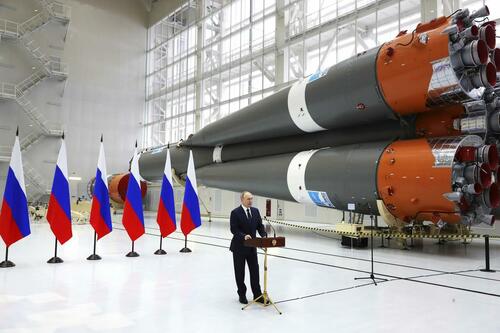 Via Associated Press
Via Associated Press
"They wanted to provoke us, wanted us to make mistakes," the Russian leader asserted in the Rossiya-1 interview. "And there was no need to use the weapons that you mentioned. I hope that it won’t be necessary," he added, referencing the interviewer's question which mentioned nuclear arms.
"We have enough capabilities and means to finish what we started in 2022 with the result that Russia needs," Putin concluded. He emphasized that Russia is able to carry through with its military goals without resorting to nuclear arms.
No evidence was given for this charge; however, it's been a constant theme of the Kremlin to accuse Zelensky's NATO backers of seeking constant escalation of the conflict, and the avoidance of a peace settlement (which would result in Russian control over eastern Ukraine and Crimea).
RT also commented in featuring the fresh statements, "Russia has repeatedly confirmed its stance that the use of nuclear weapons will be its last choice. In November, Putin has approved Russia’s updated nuclear doctrine."
The West became alarmed when earlier in the Ukraine war Putin ordered tactical nuclear warheads to be stationed in Belarus. These are reportedly overseen by Russian officers in Belarus, and with President Lukashenko's permission.
Starting in late September, Russia had unveiled its expanded nuclear doctrine which proposed a lowered threshold for Russian strategic forces' use of nukes.
This was due to the "emergence of new sources of military threats and risks for Russia and our allies" - amid fiercer drone and missile attacks coming across the border from Ukraine.
Also, Moscow has said US-produced F-16s which are now being flowing by Ukraine's air force are capable of carrying nuclear weapons.
Kremlin spokesperson Dmitry Peskov previously described that Russia's nuclear doctrine changes mean that "the Russian Federation reserves the right to use nuclear weapons in the event of aggression using conventional weapons against it and/or the Republic of Belarus."
-
Site: Zero HedgePoland Slams Germany's Plans To Tighten Border ControlsTyler Durden Mon, 05/05/2025 - 02:00
Germany and Poland have been at peace for decades, yet the border between the two is still fraught, with this new dispute arising largely due to migration. Germany’s Friedrich Merz, expected to become the country’s new chancellor in just a few days, has announced that his country would tighten the external border on the first day of his chancellorship.
In response, Poland is warning Germany against this move, with Warsaw fearing that these tightened controls could make Polish commuters’ lives very difficult, reduce commerce, and potentially even increase migration pressure on Poland, according to German newspaper Welt.
Polish diplomat Jan Tombinski told Politico magazine that the current controls are already a “problem for daily border traffic and the functioning of the EU internal market. We therefore do not want to see any tightening of the border controls.”
The Polish government “naturally stands by our commitment to protecting Europe’s external borders—especially with Russia and Belarus,” the diplomat said. He also emphasized that “free movement within the European Schengen area (should) be maintained.”
Germany could send up to 70,000 migrants to Poland per year, according to a Polish MP.@DariuszMatecki filmed the new massive migrant center near the Polish border.
— Remix News & Views (@RMXnews) February 21, 2025
Germany "can't cope with the migration problem."
The solution? Send them to Poland and other EU nations. pic.twitter.com/b0Ak8fctgnMany migrants entering Poland make their way to Germany, which has become a problem for the German government. Polish conservatives accuse the ruling left-liberal government of quietly taking back thousands of these migrants from Germany, and in some cases, German police have been accused of “dumping” migrants back on Polish territory.
Tombinski, hinting that Poland may be willing to accept more of these migrants, said that his country will accept its “obligations under EU legislation,” including the new CEAS asylum policy.
The likely future head of the German chancellery, Thorsten Frei, told Spiegel: “We will intensify border controls and turn back those who have no right to enter Germany.” He said the federal police being supported at the border is “an essential point. It will have a short-term effect.”
In regard to the medium-term solution, Frei said he wants to regulate migration across the European continent so “that, on the one hand, we live up to our humanitarian responsibility and, on the other hand, prevent our societies from being overwhelmed,”
Designated German interior minister, Alexander Dobrindt (CSU), said that new measures will be used to combat illegal immigration. “There is no doubt about my determination.” said Dobrindt, however, “borders will not be closed, but they will be more tightly controlled.”
The CDU, which fears the growing popularity of the AfD, played a huge role in the current immigration crisis when Angela Merkel first allowed over 1 million migrants to enter the country in 2015 and 2016, but now the party is attempting to talk tough on the issue.
“We have strong polarization in the country,” Dobrindt stated. “We have to reduce it. We can only achieve this if we get illegal migration under control.”
The Green Party is already trashing the move, stating that it is illegal and contrary to European law.
“I’m curious to see how long it will take this time for the courts to overturn this,” warned a Green Party member speaking to Welt.
Merz is headed to meet Polish Prime Minister Donald Tusk in Warsaw next week, where the issue will likely be discussed further.
-
Site: The Unz ReviewDissociated Press An Israeli spokesperson has admitted that the Israeli strike on the aid ship Conscience in international waters off Malta was intended to kill the “antisemitic Hamas-adjacent” climate activist Greta Thunberg. At this morning’s IDF press conference, the excitable Sharren Haskel, Israeli Deputy Minister of Foreign Affairs, explained that Thunberg was an even worse...




